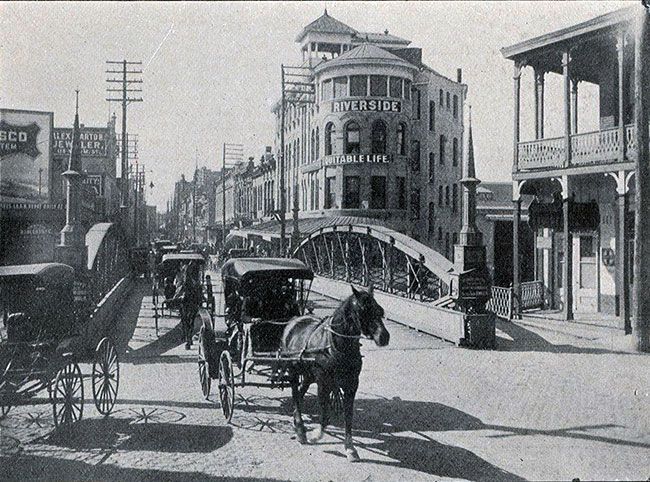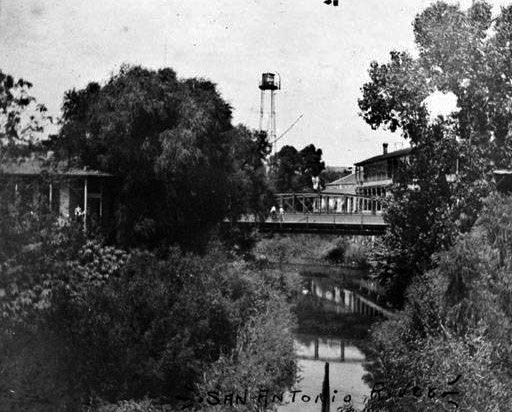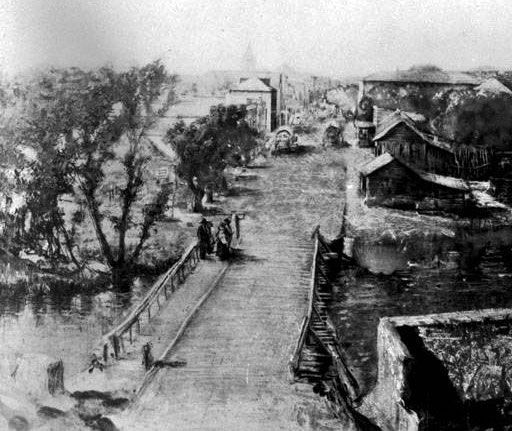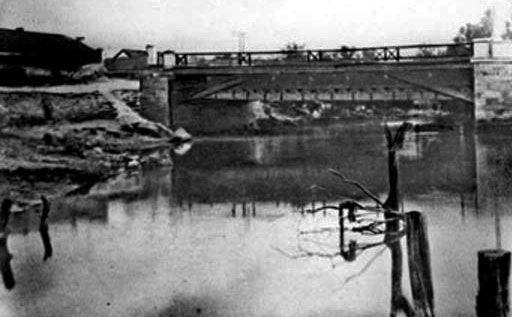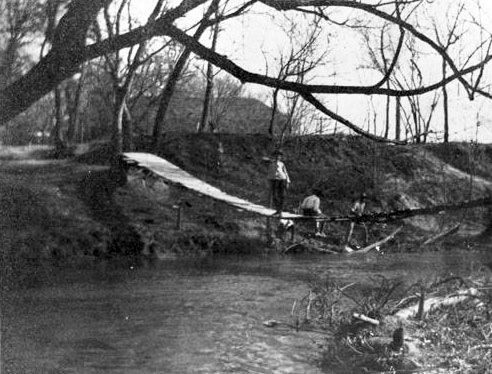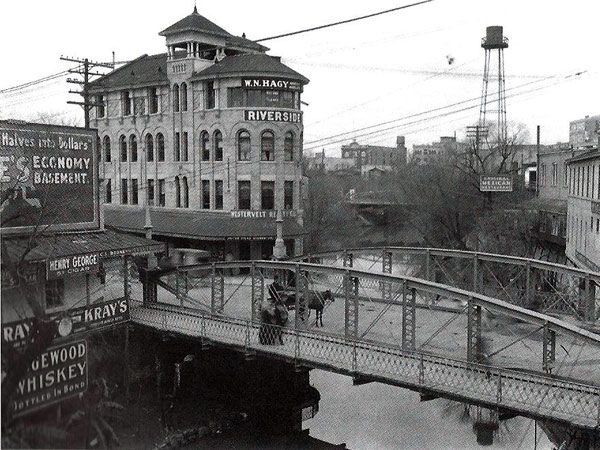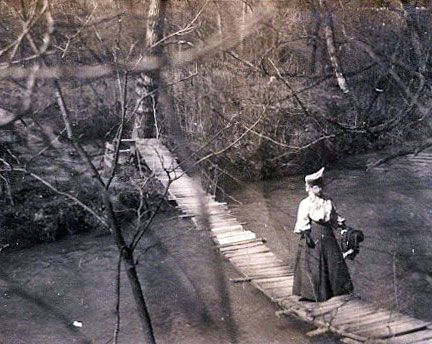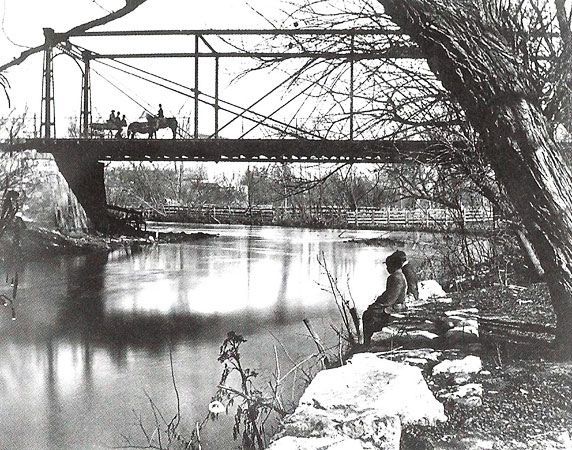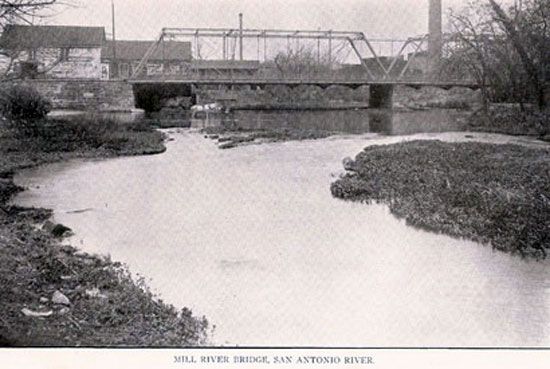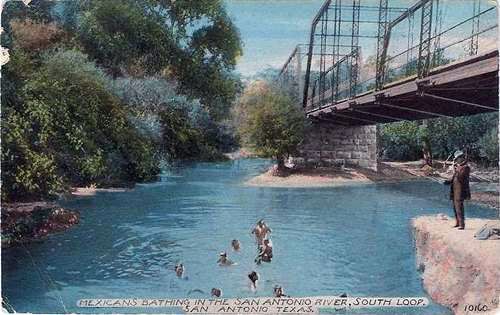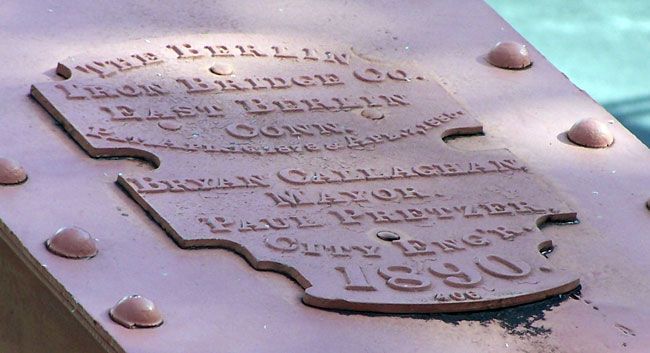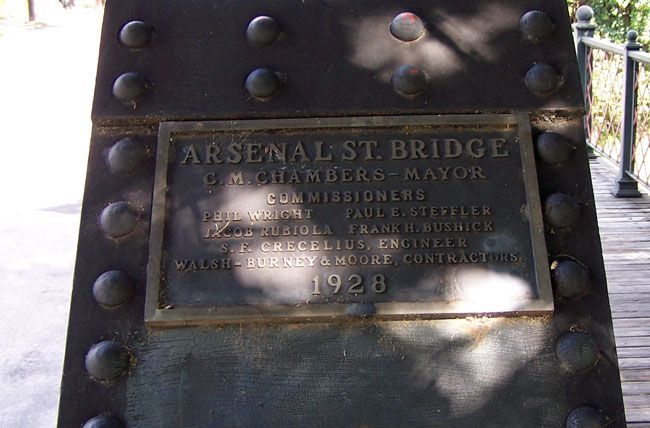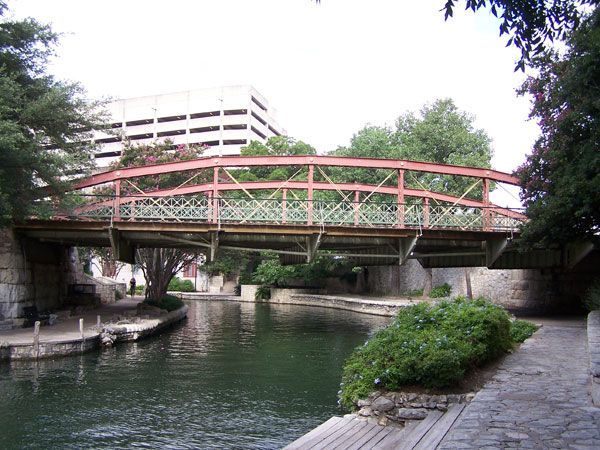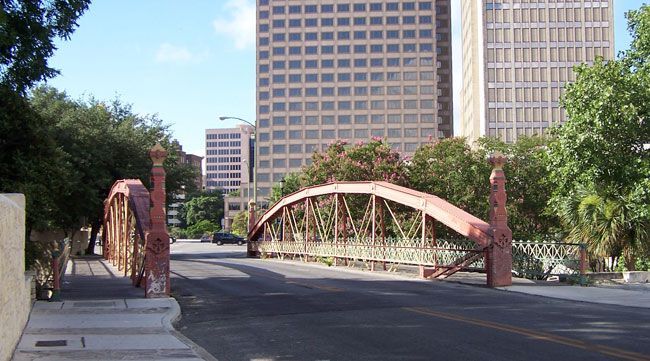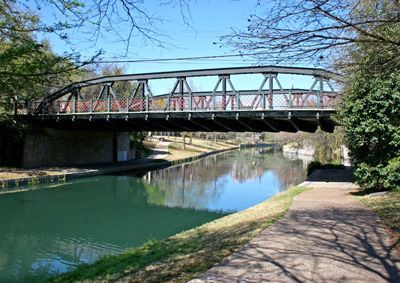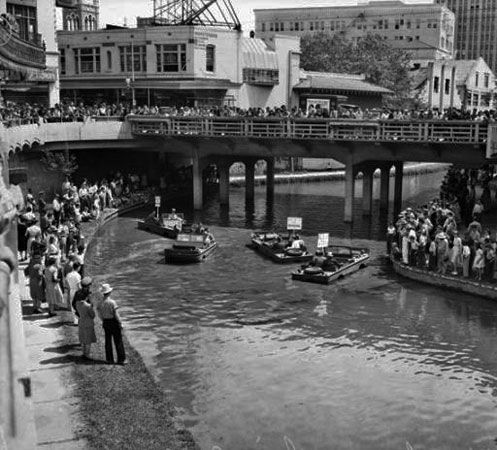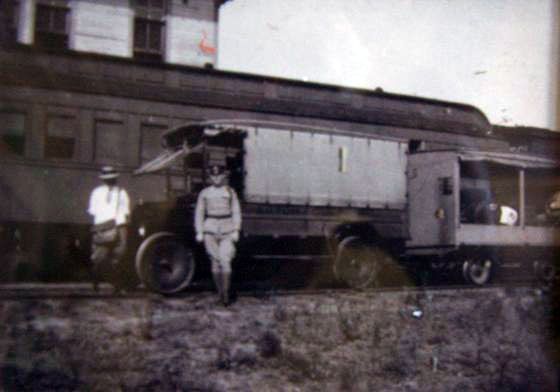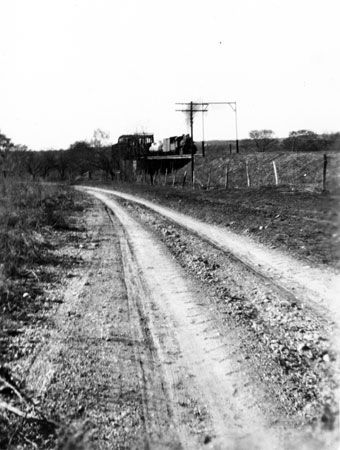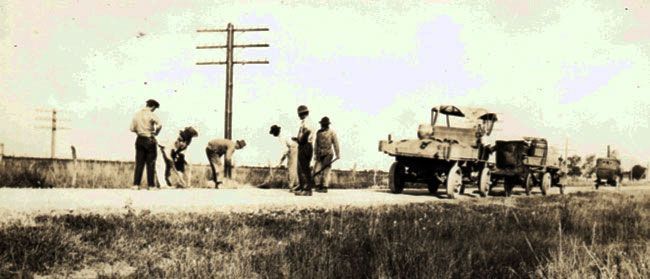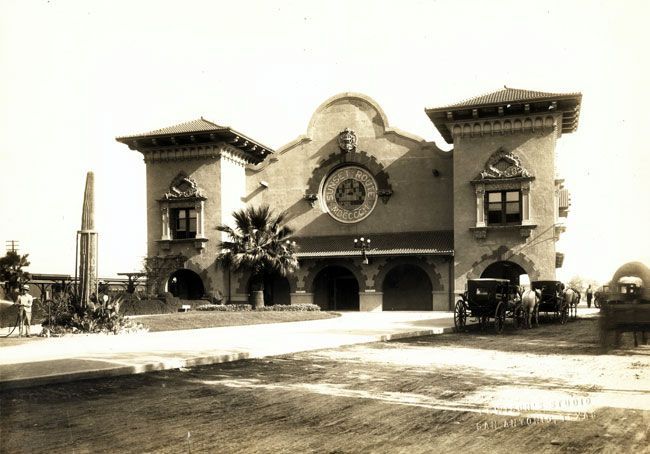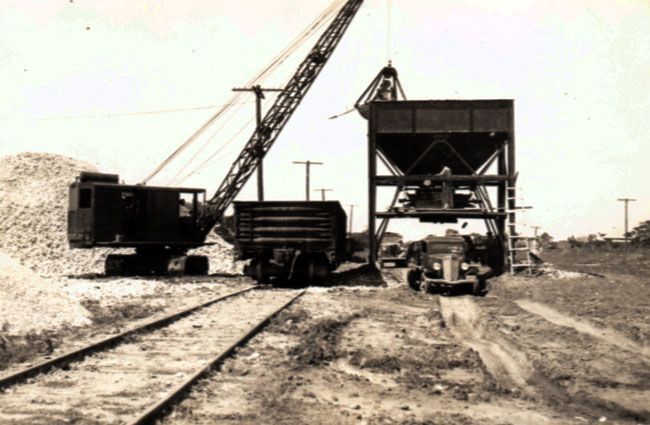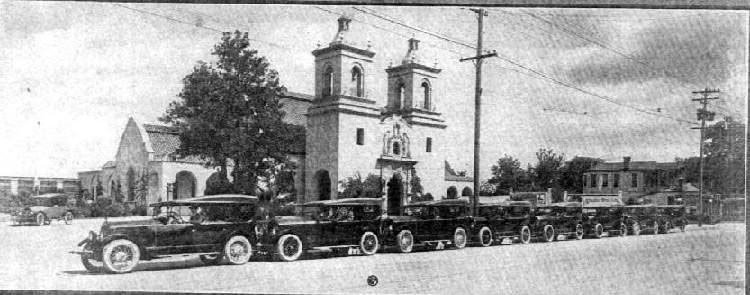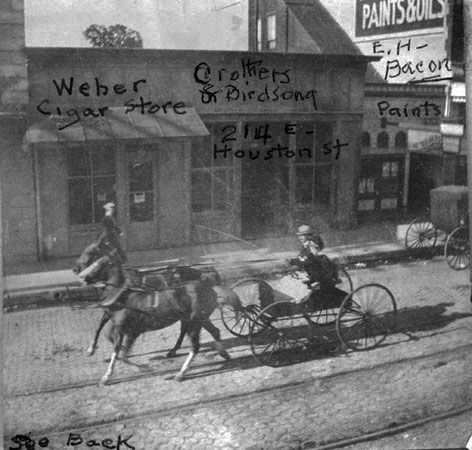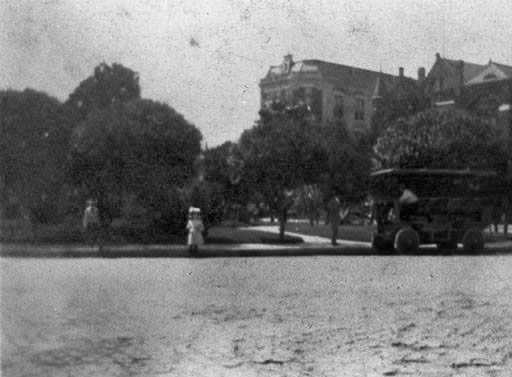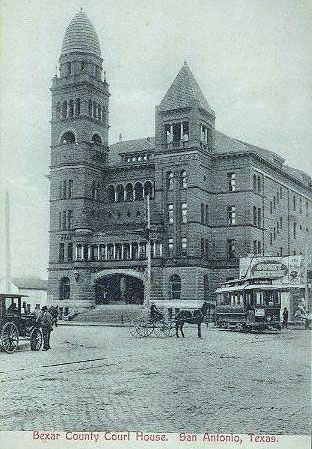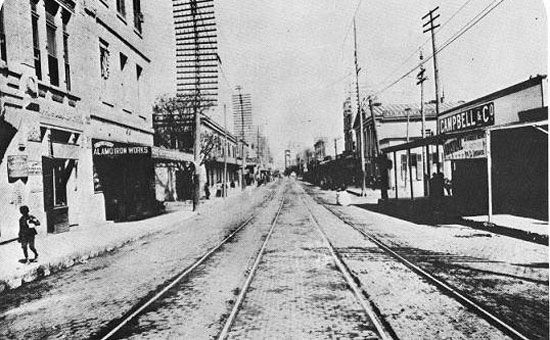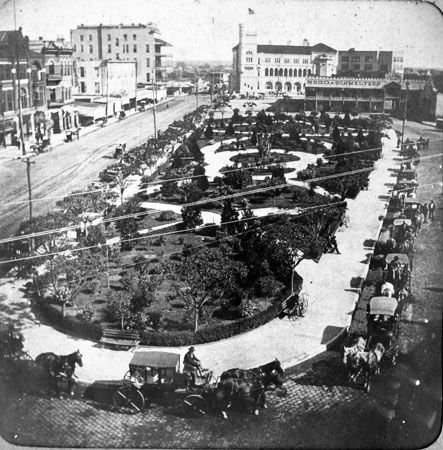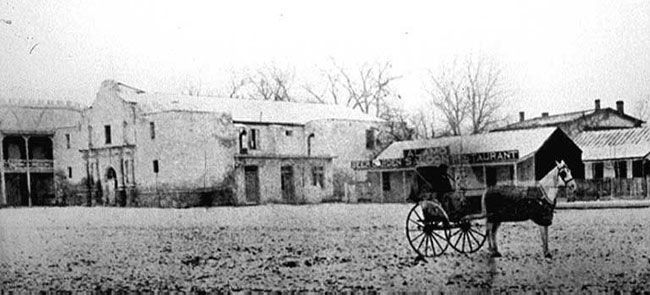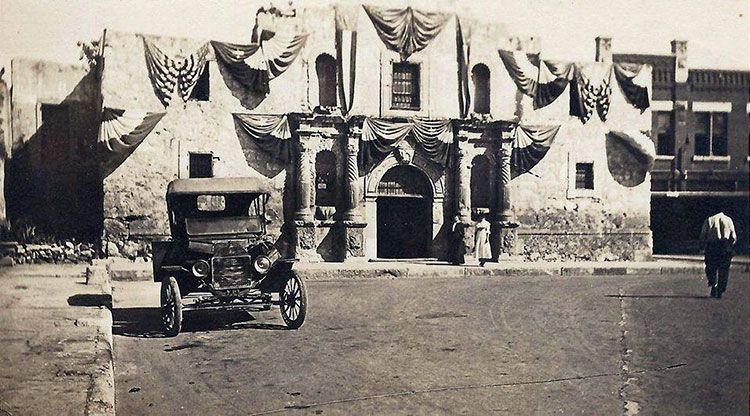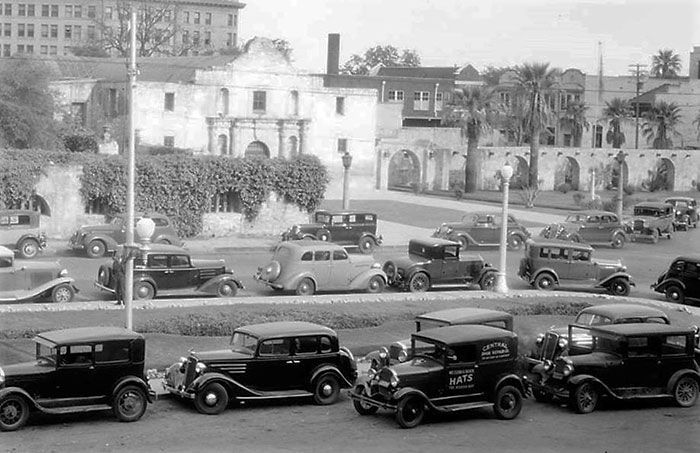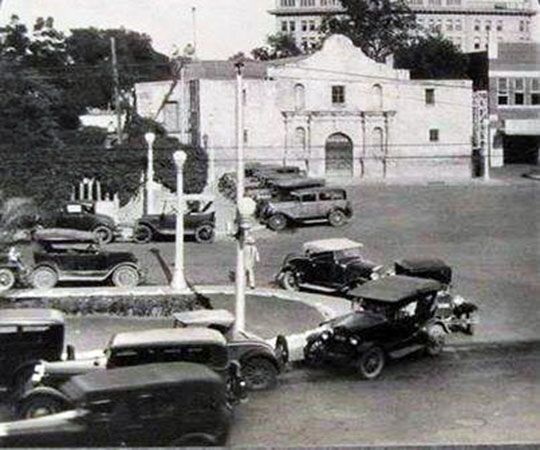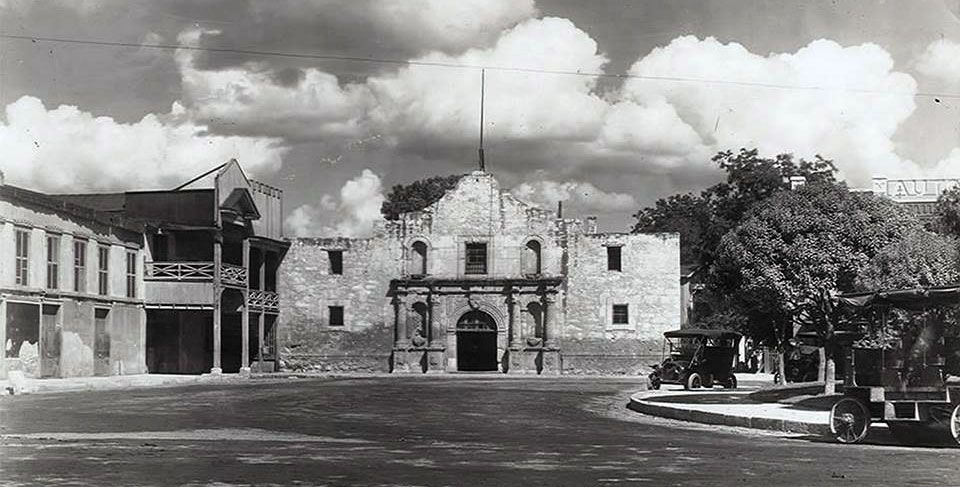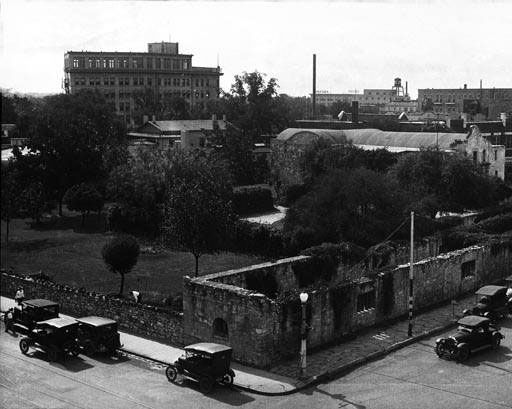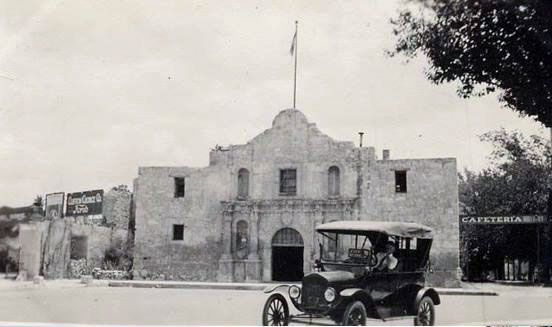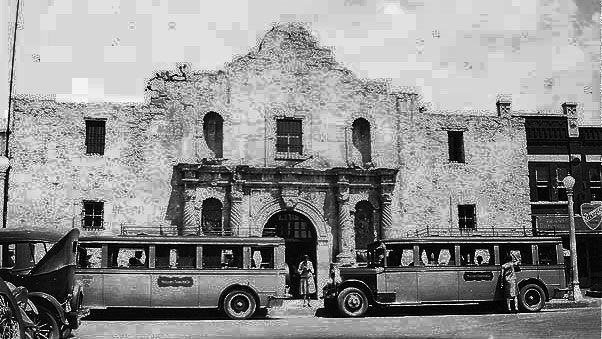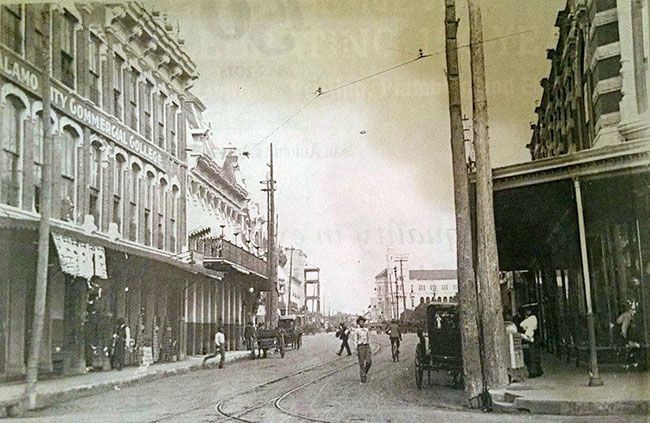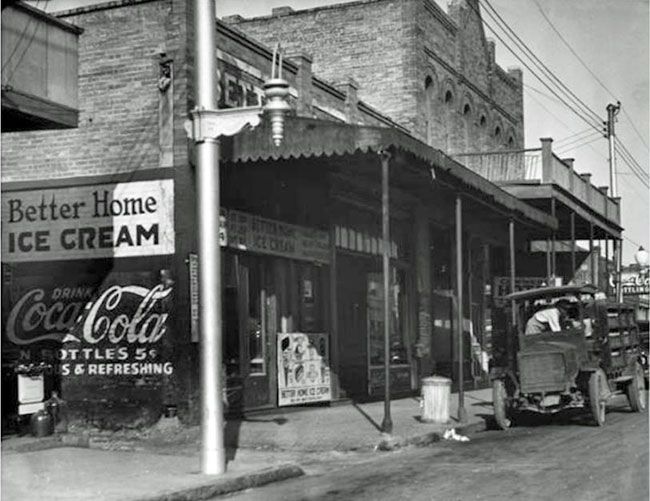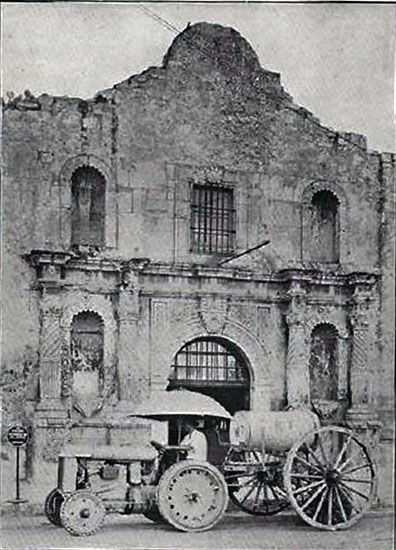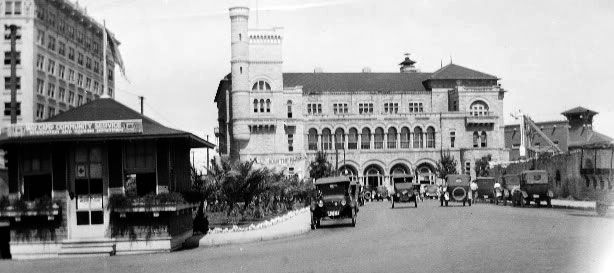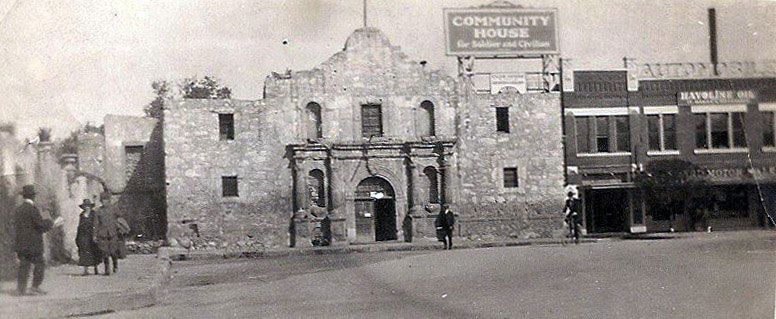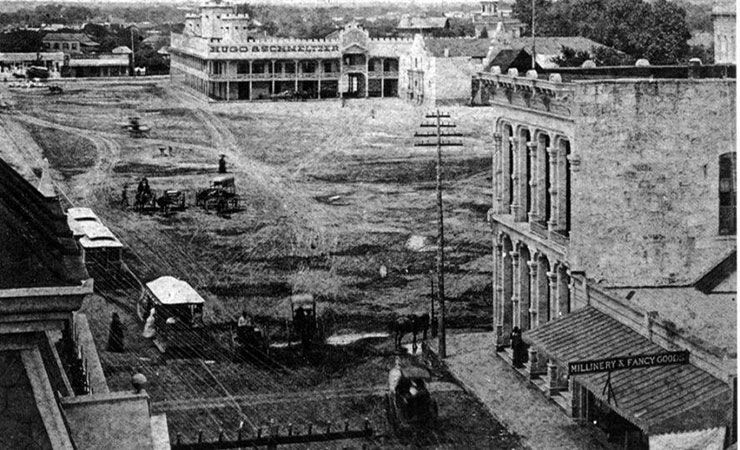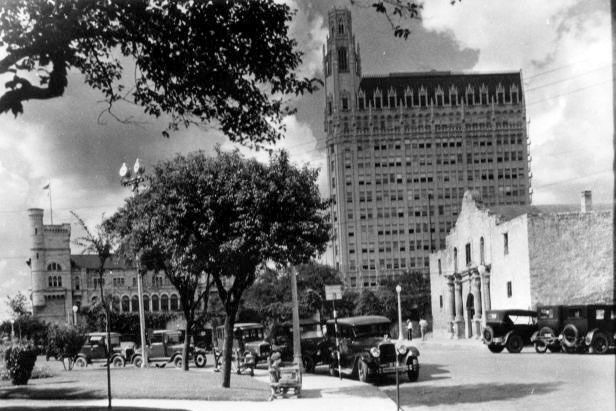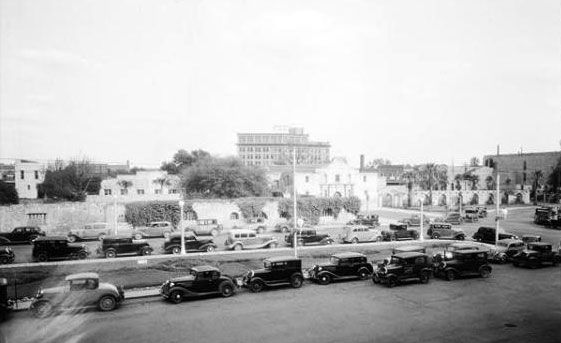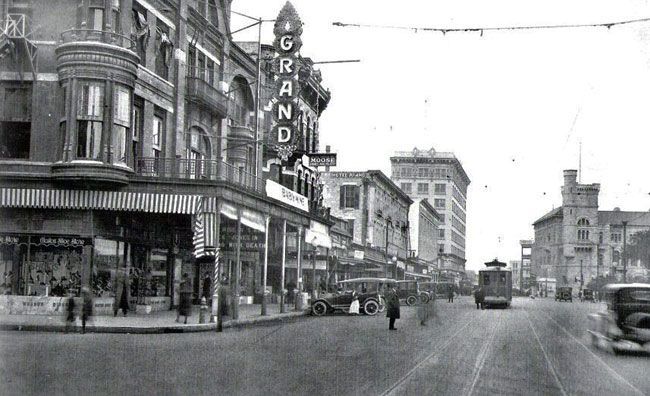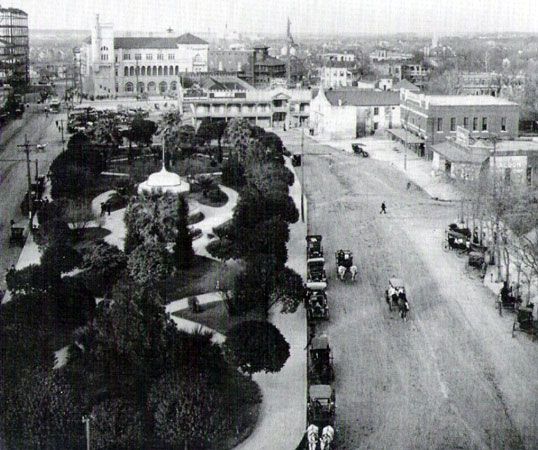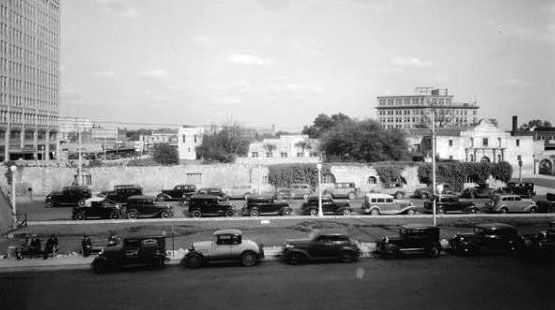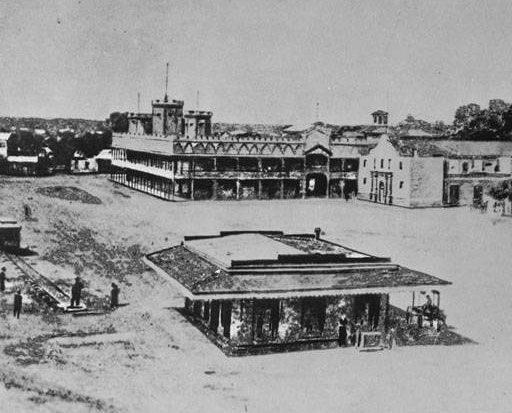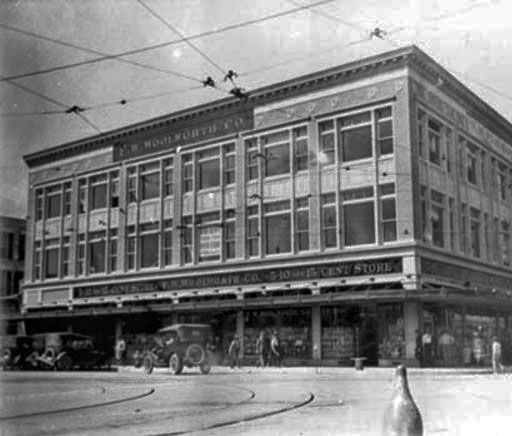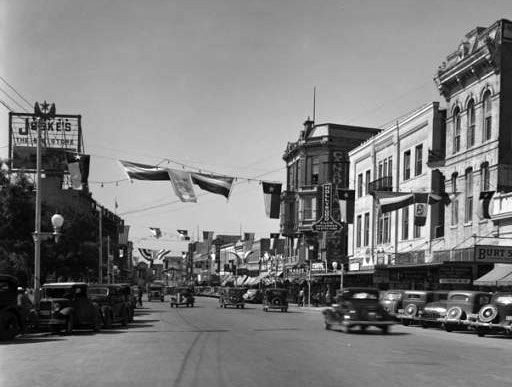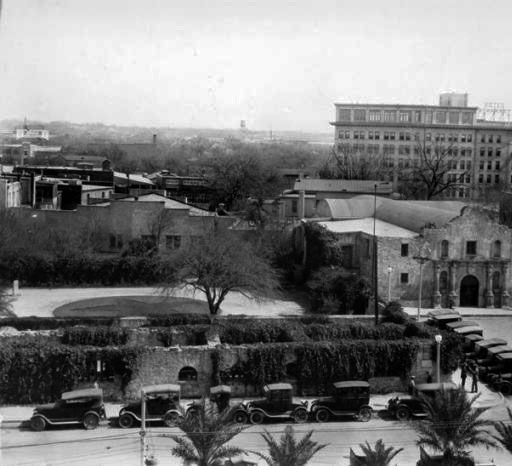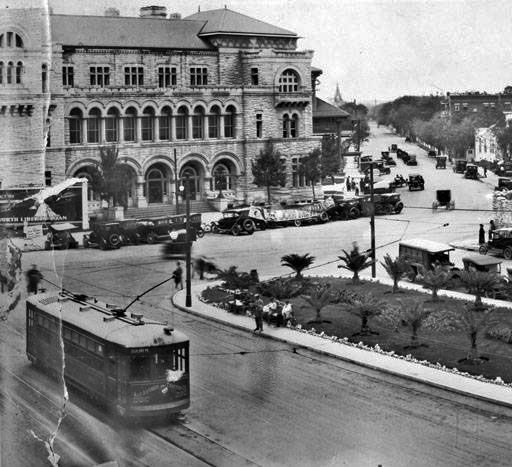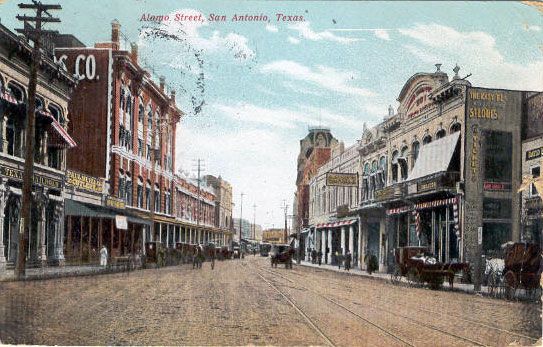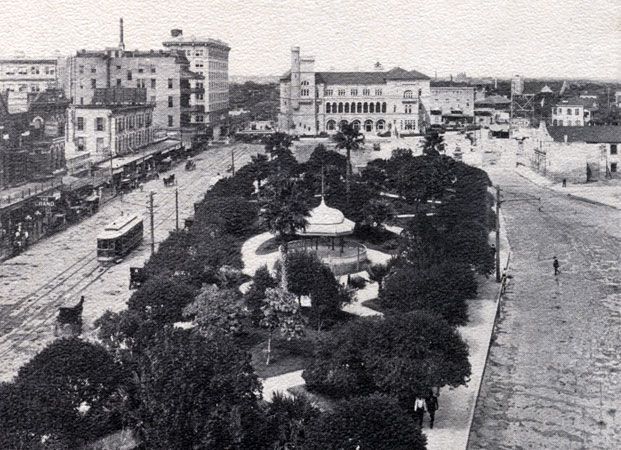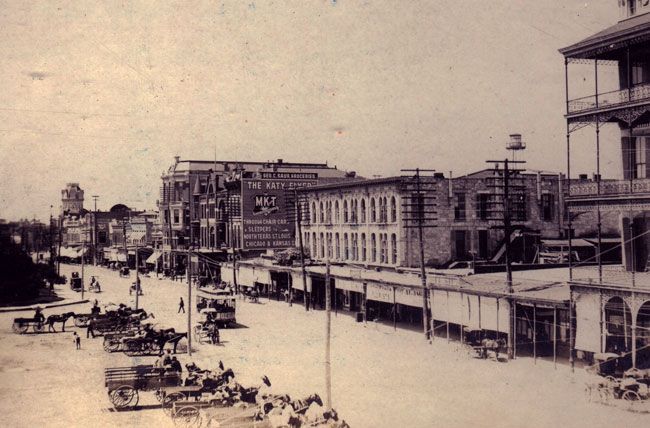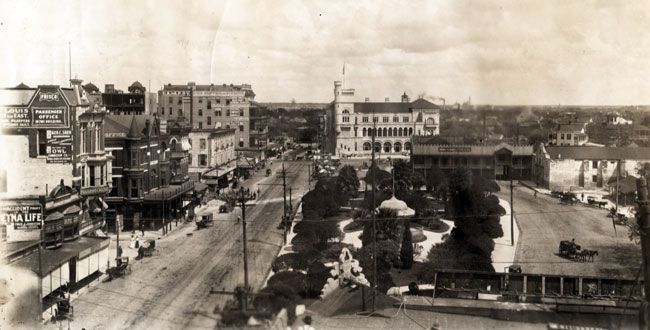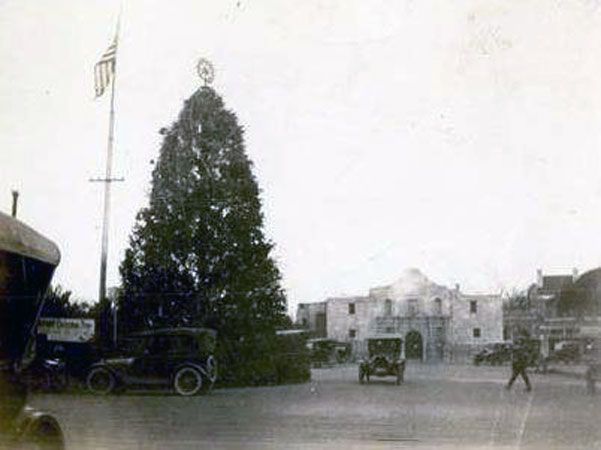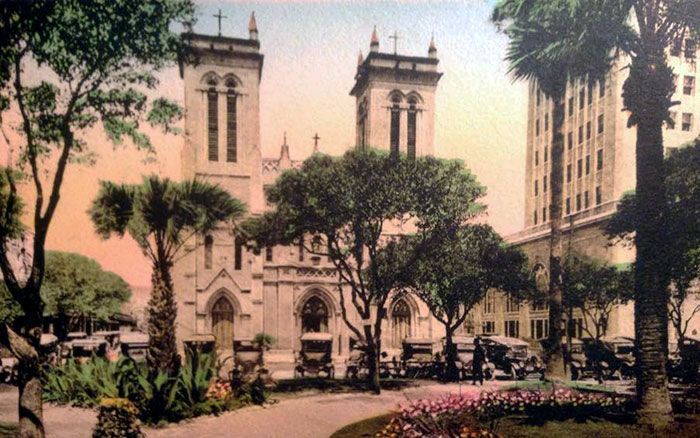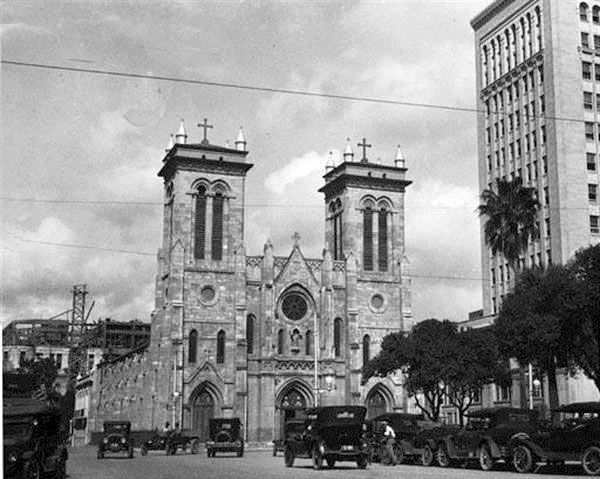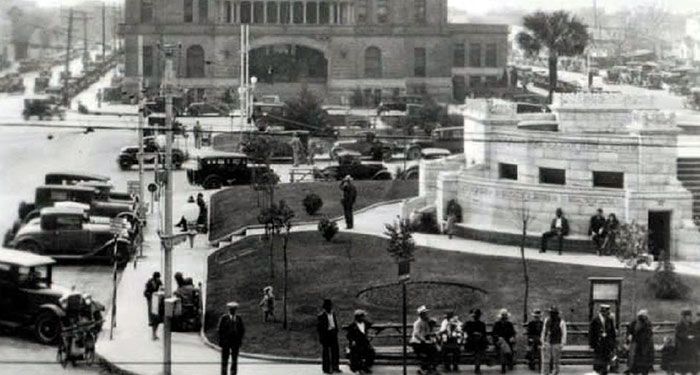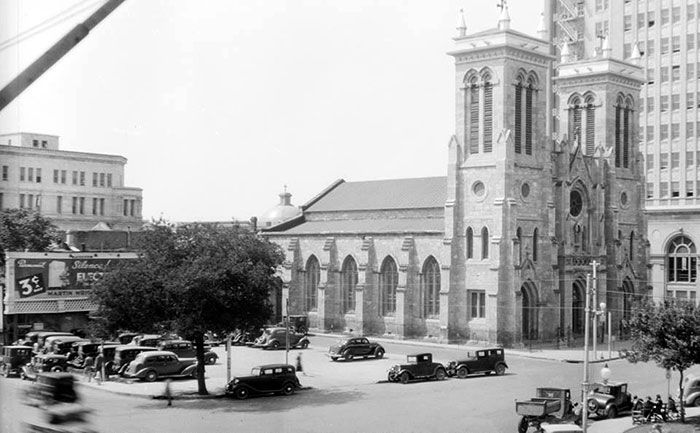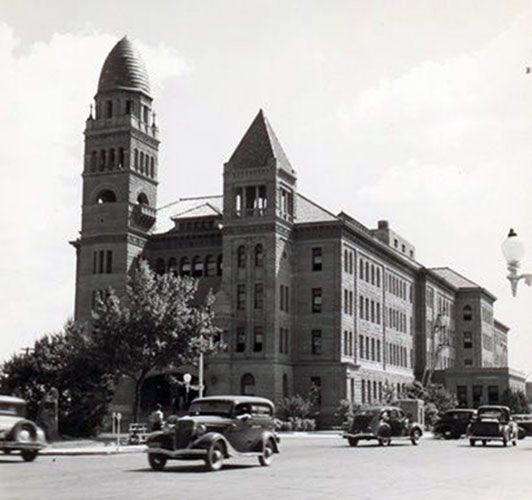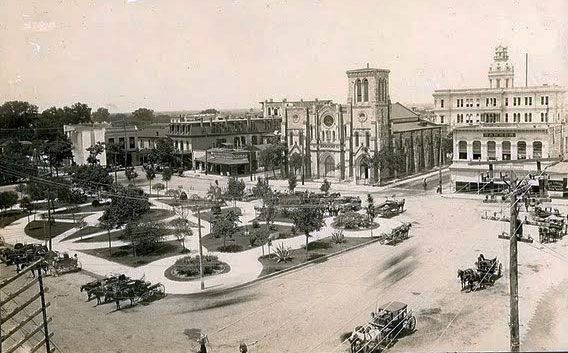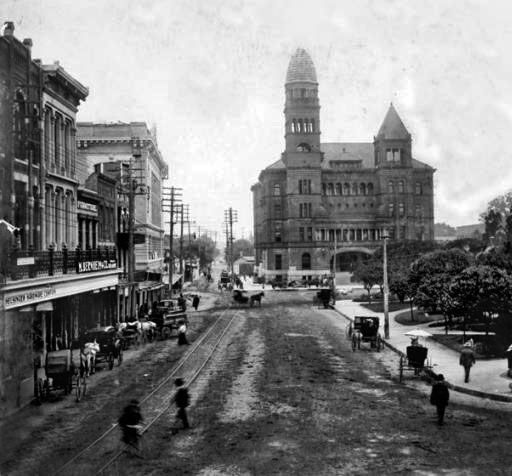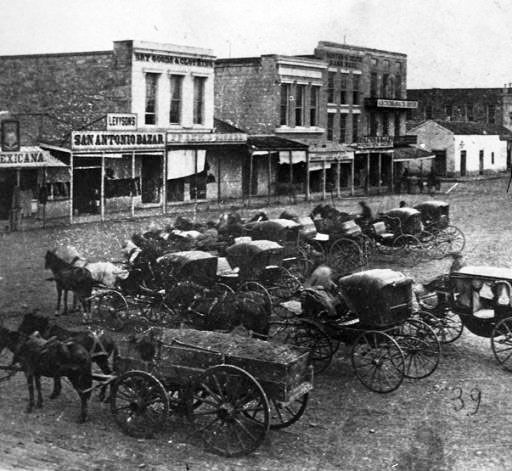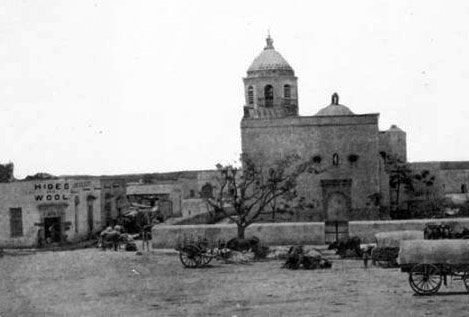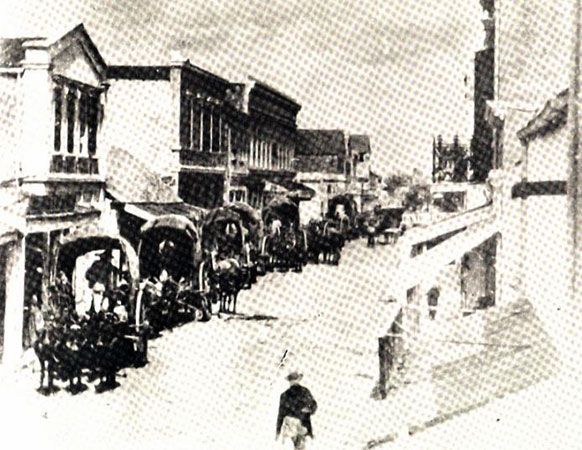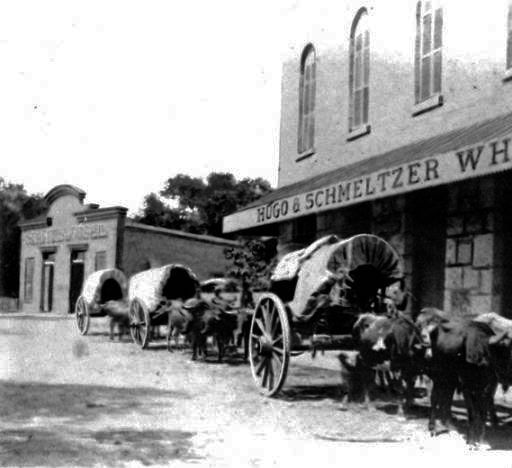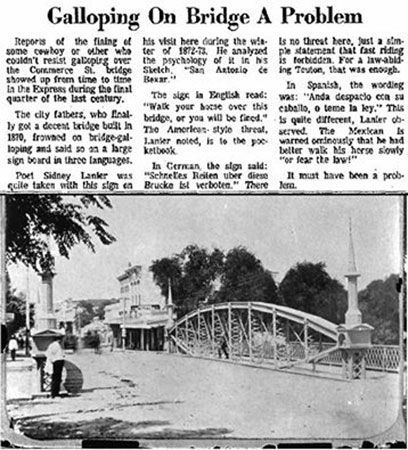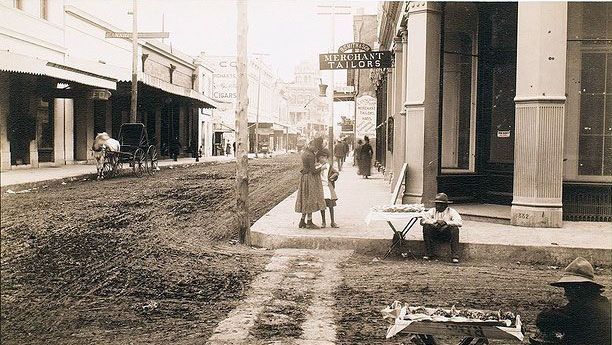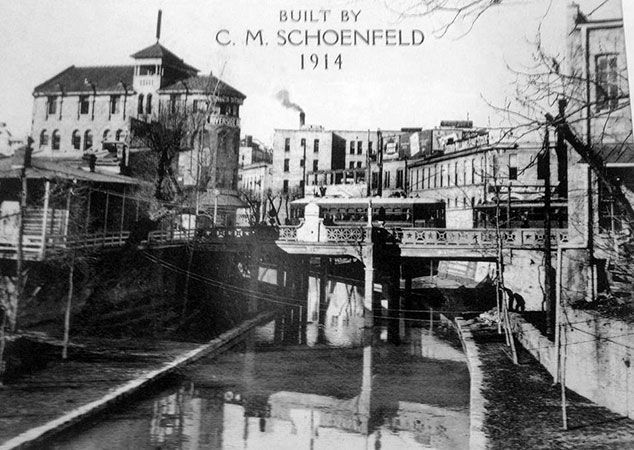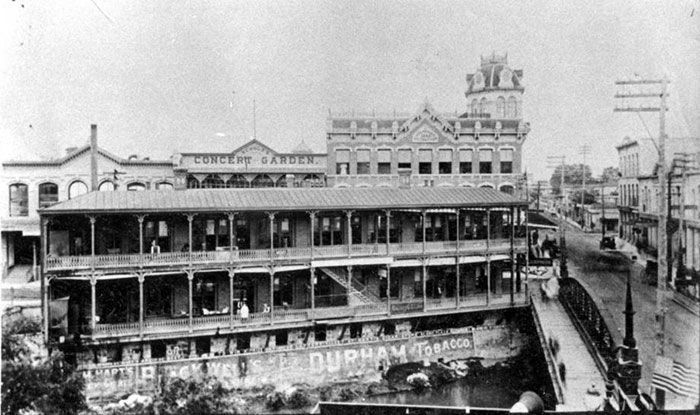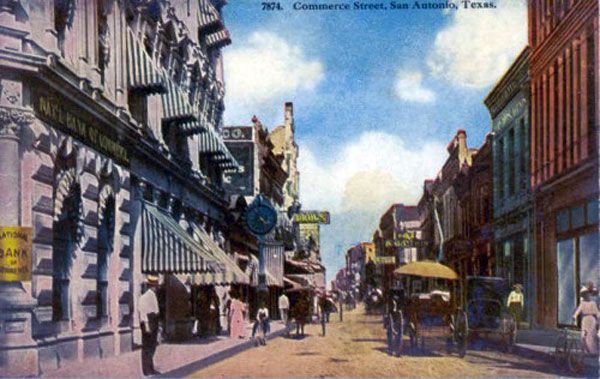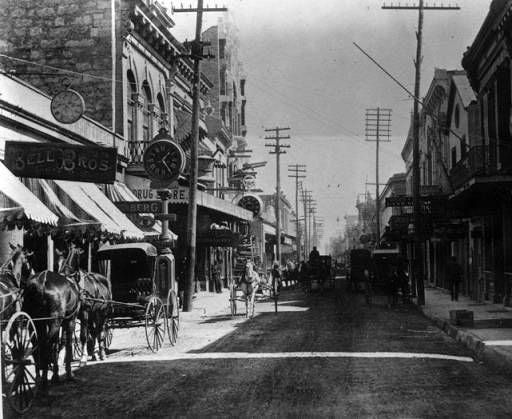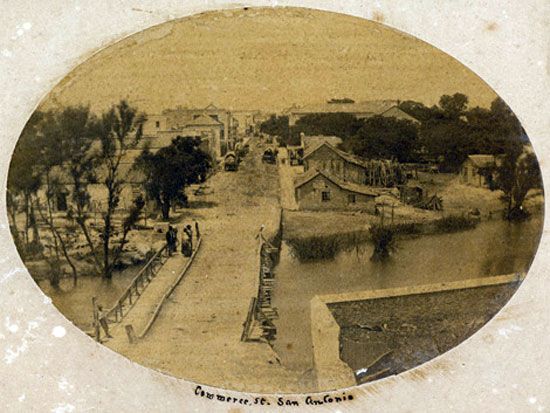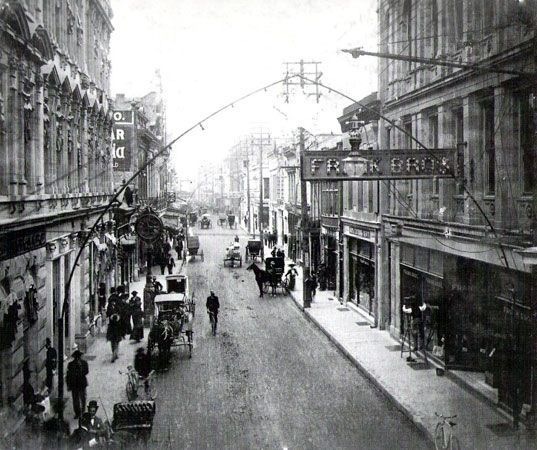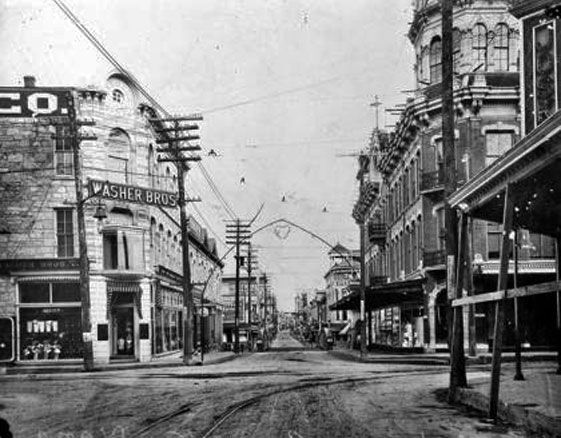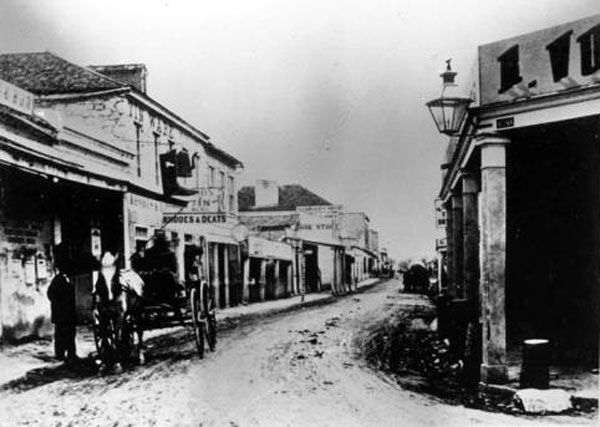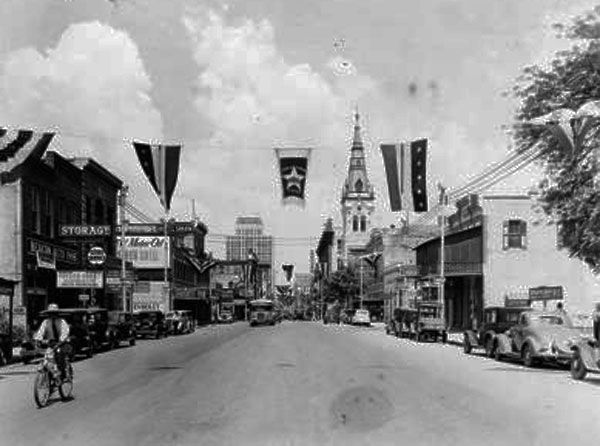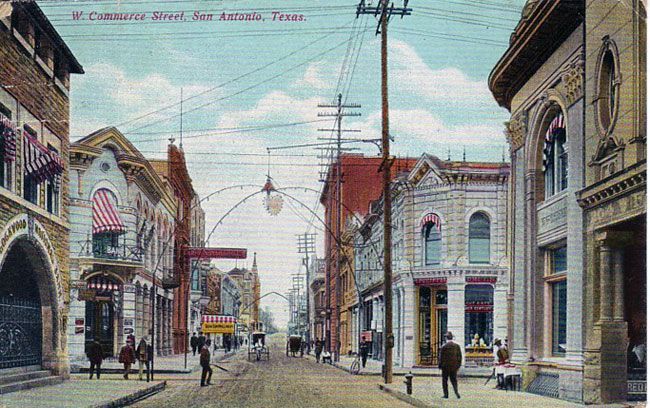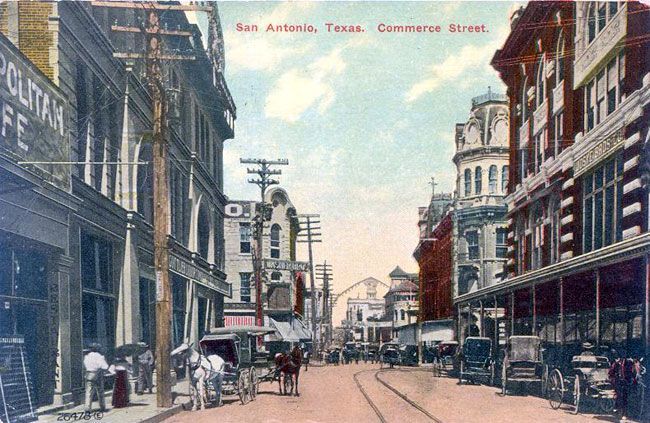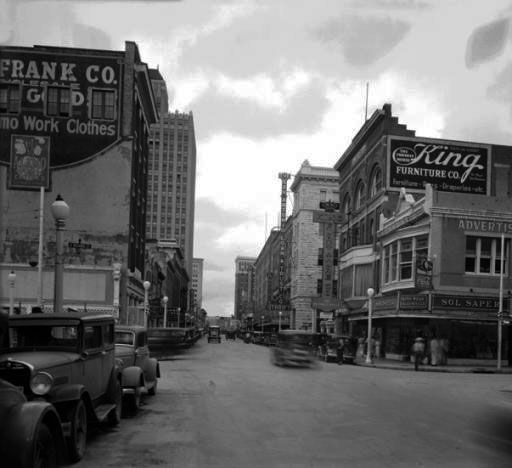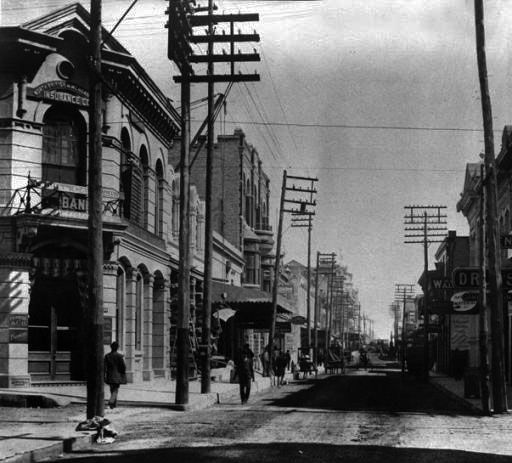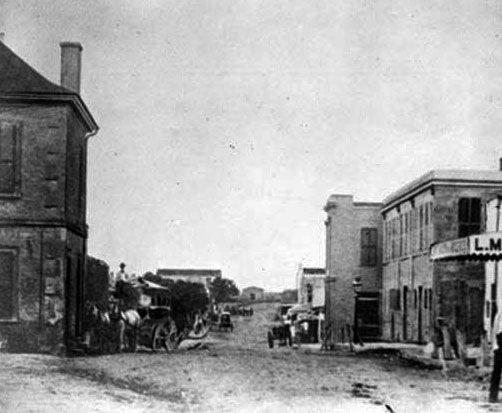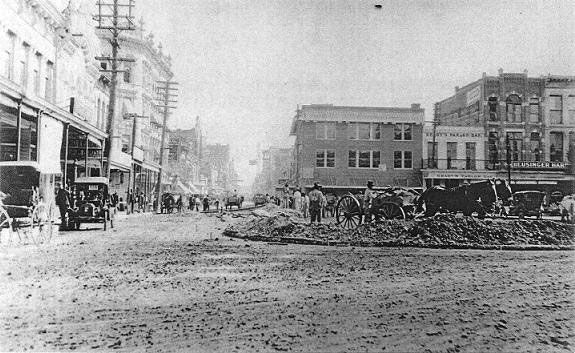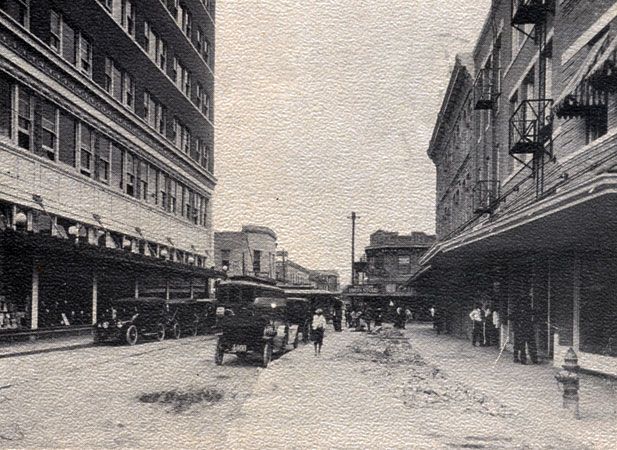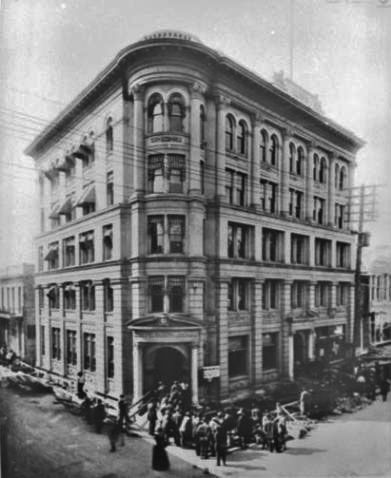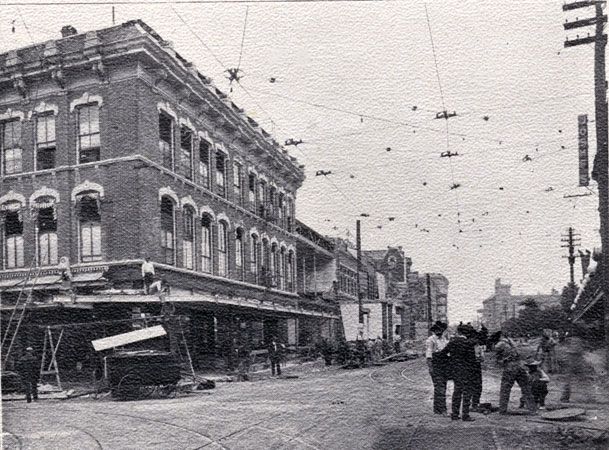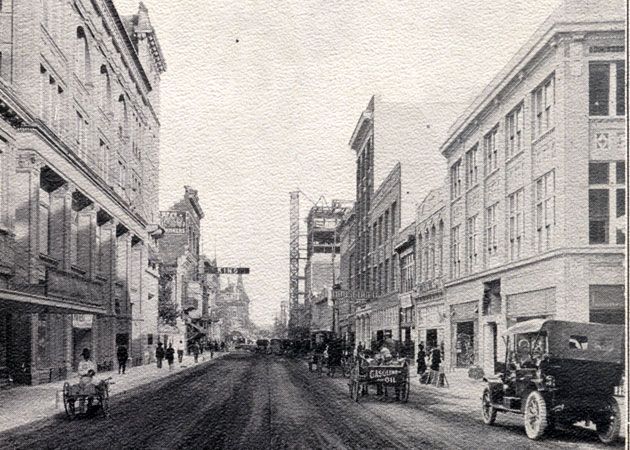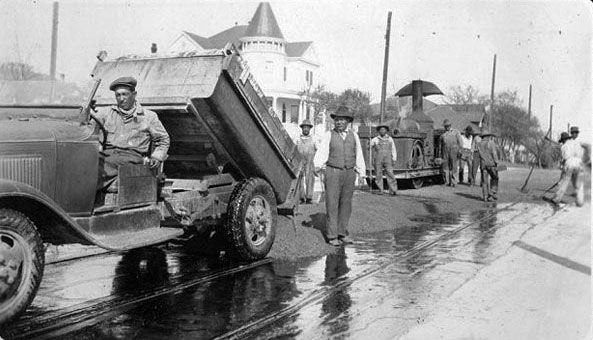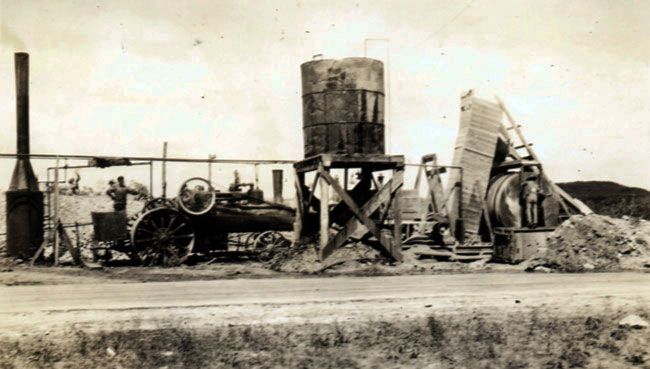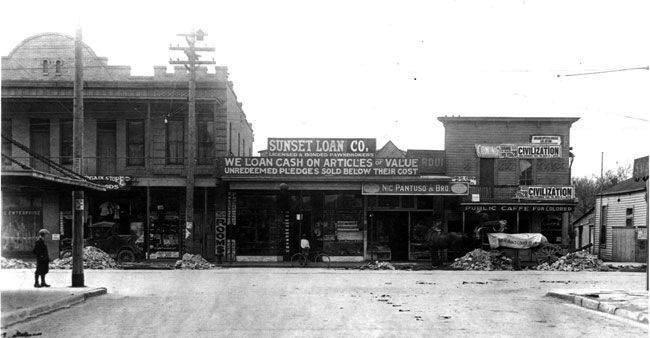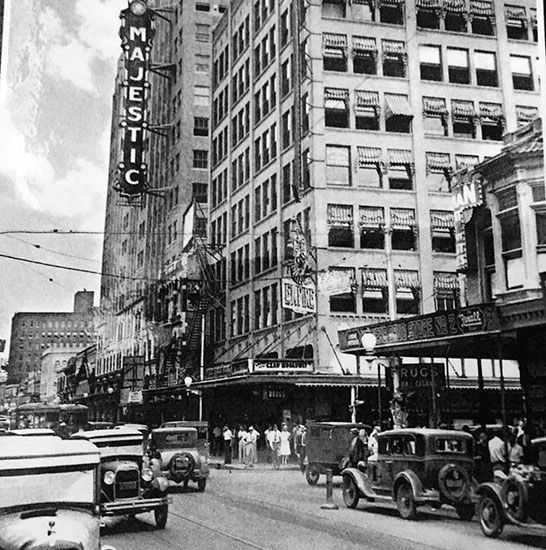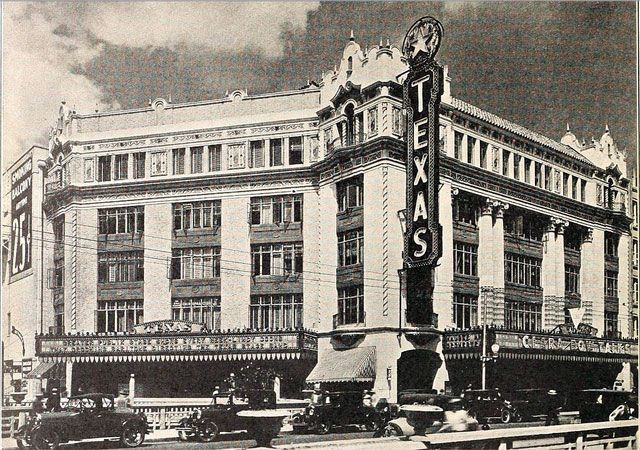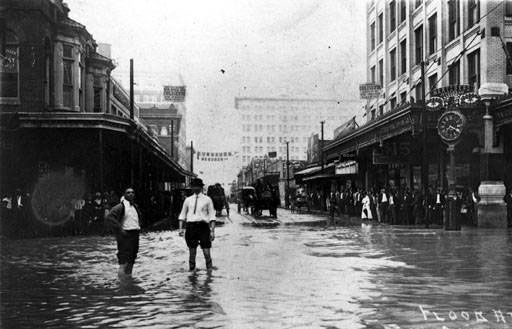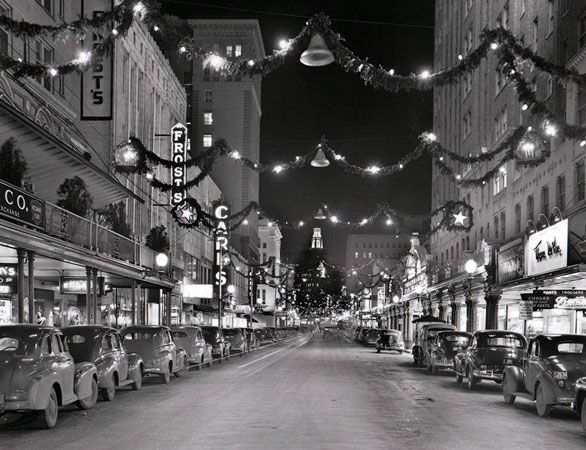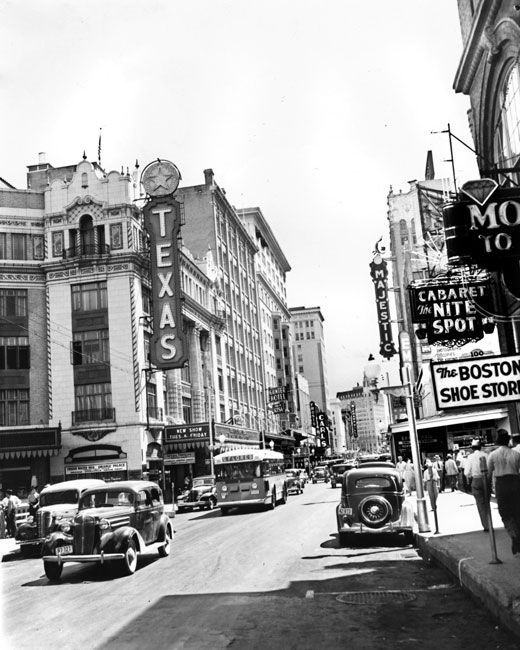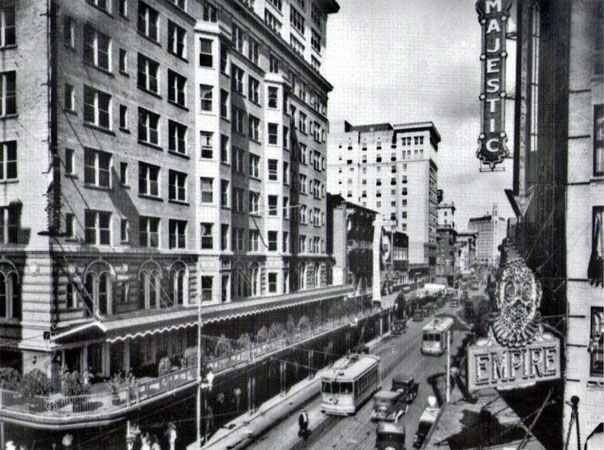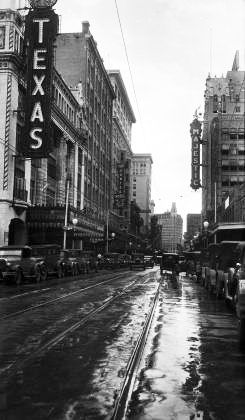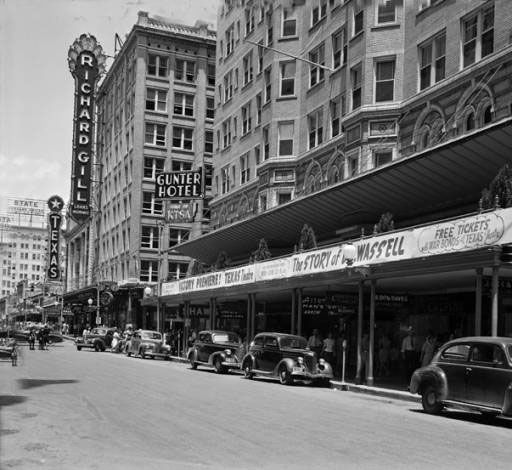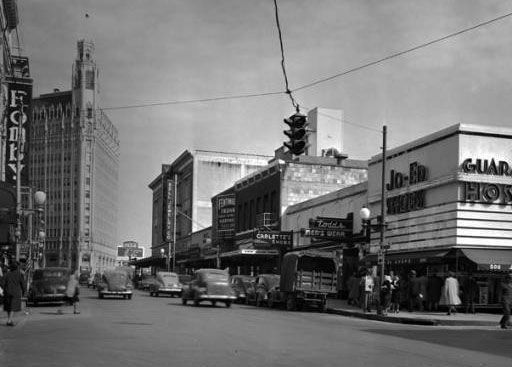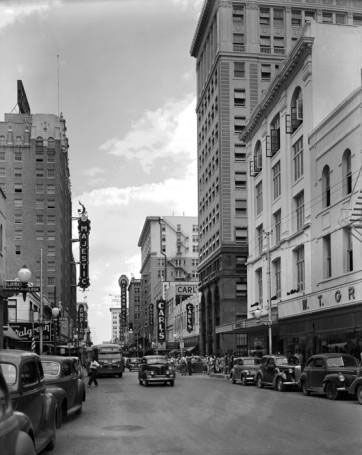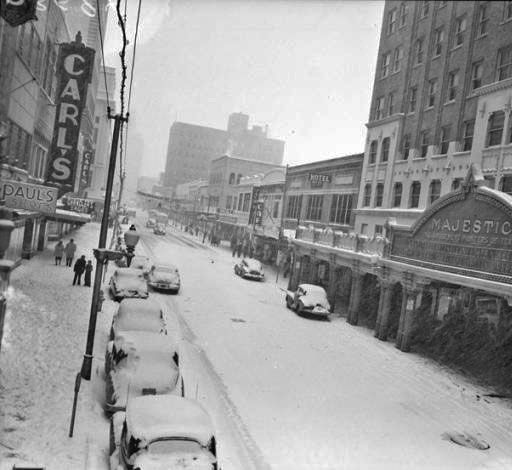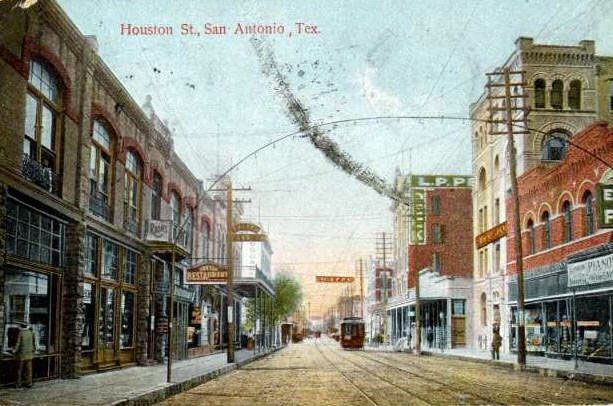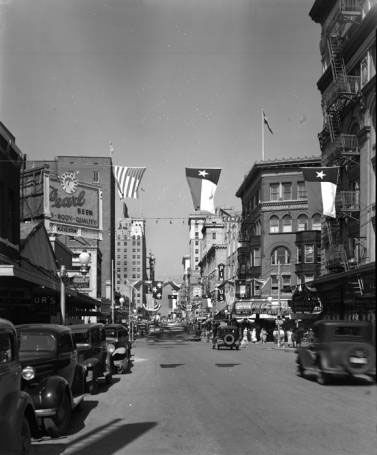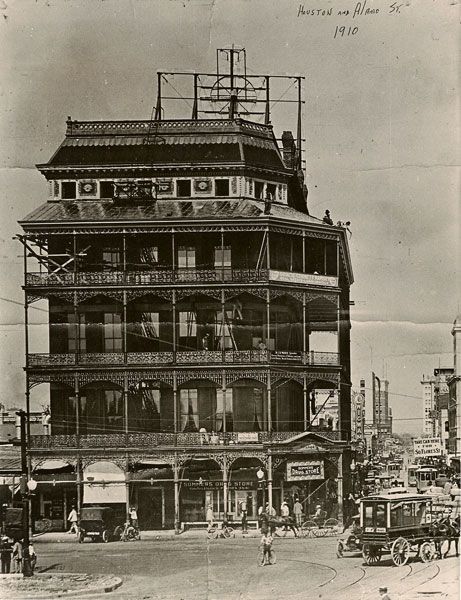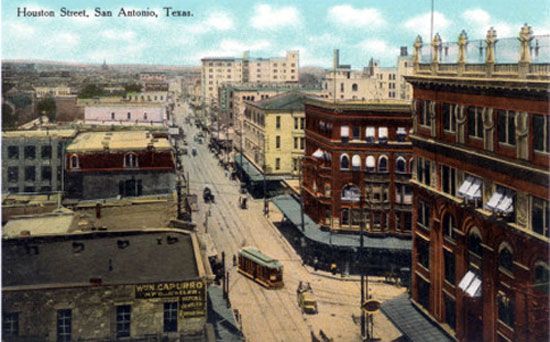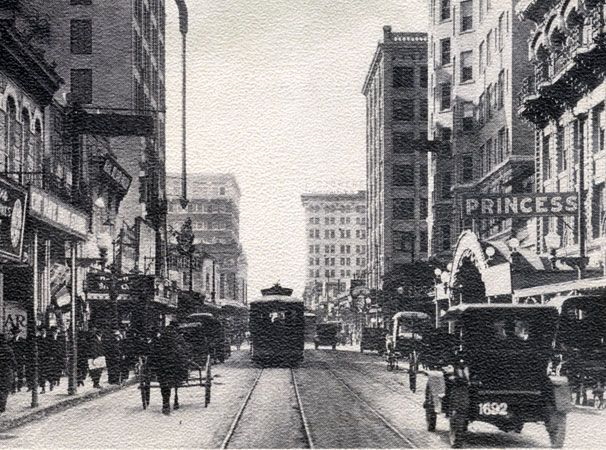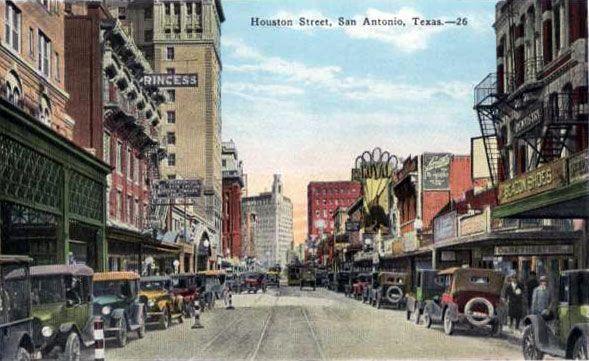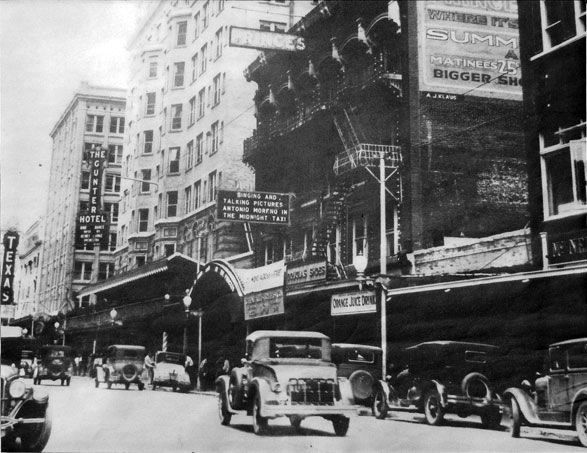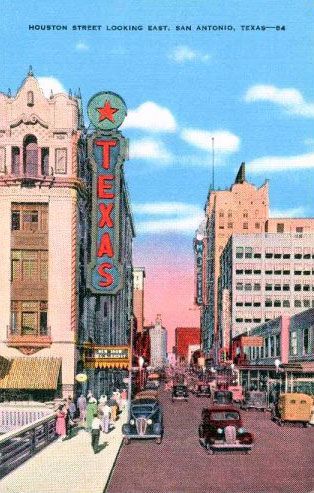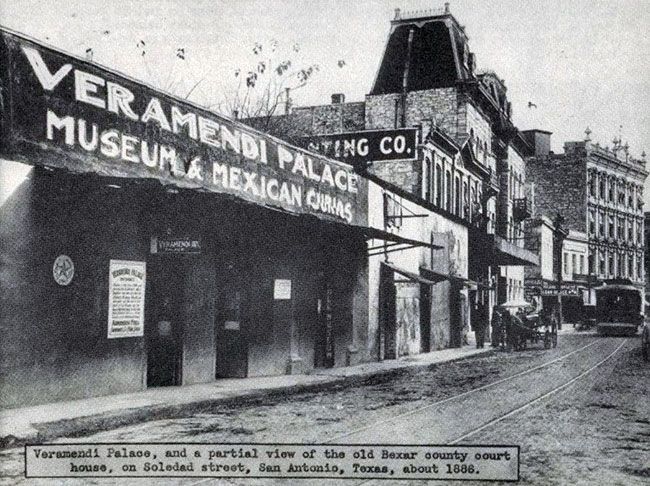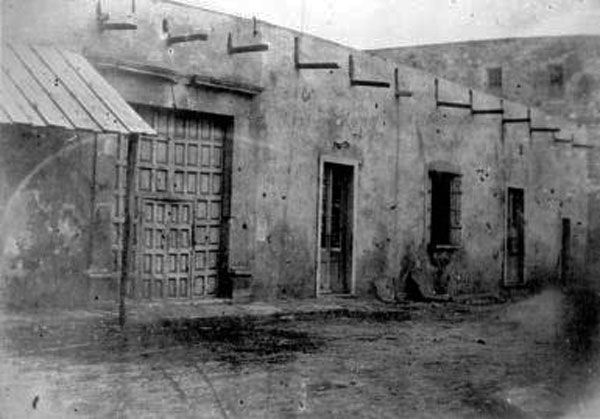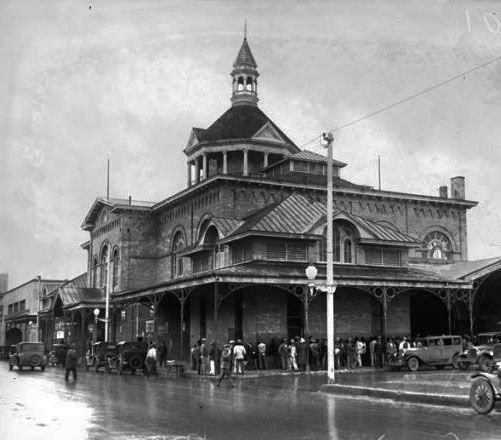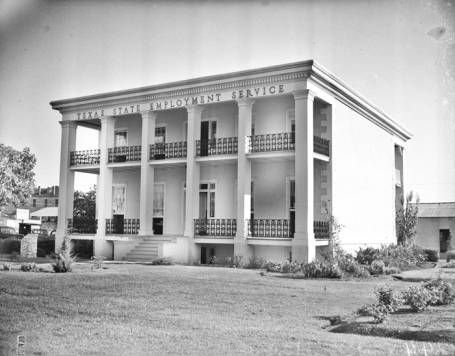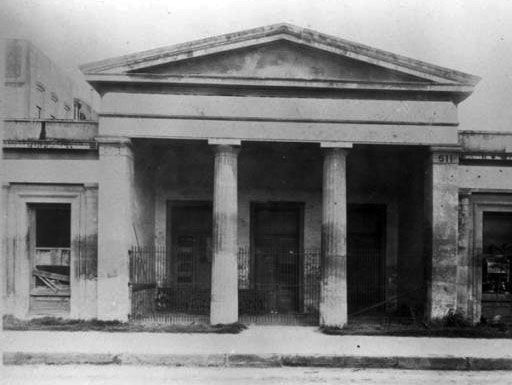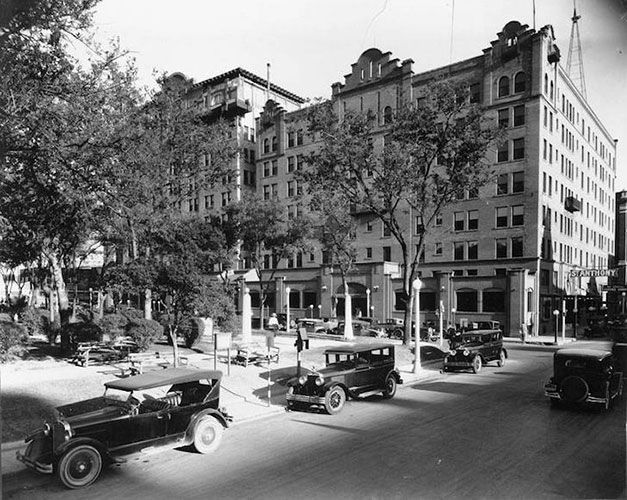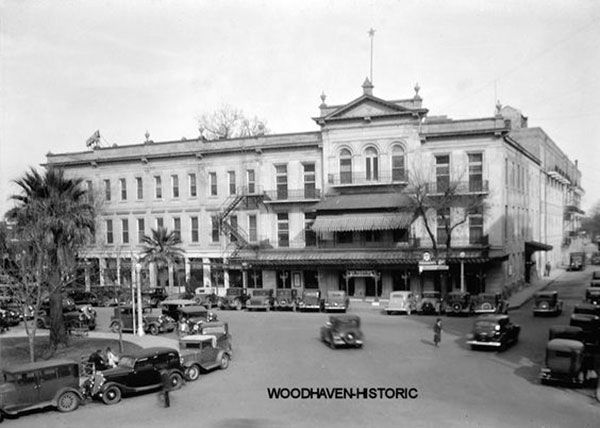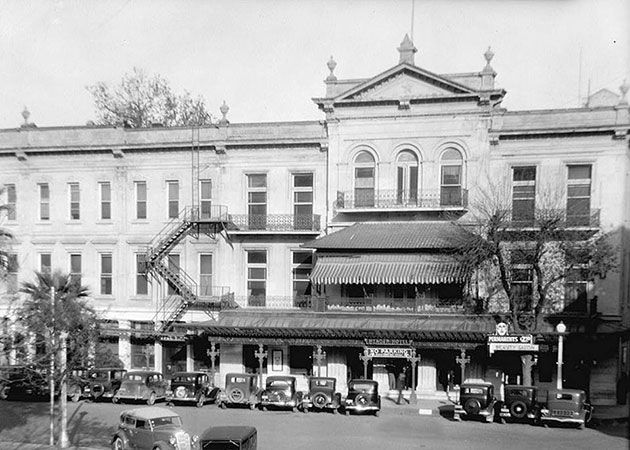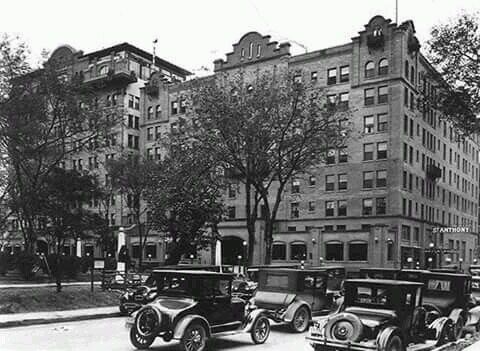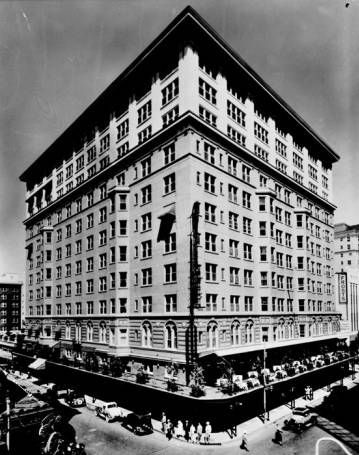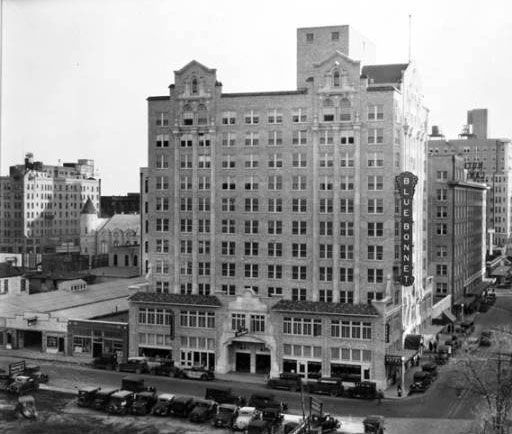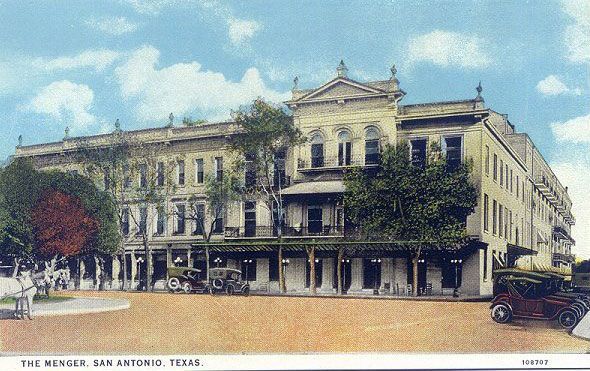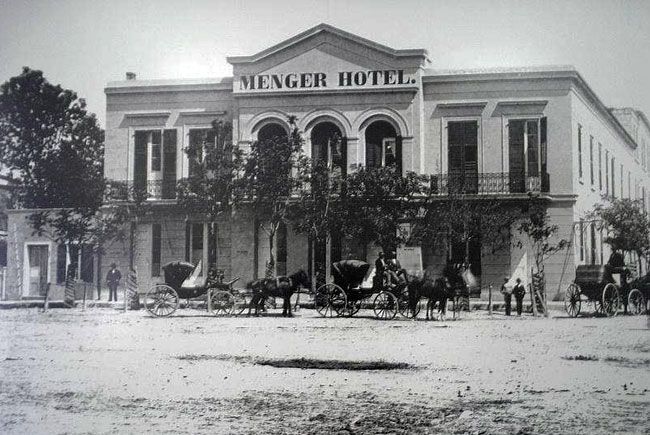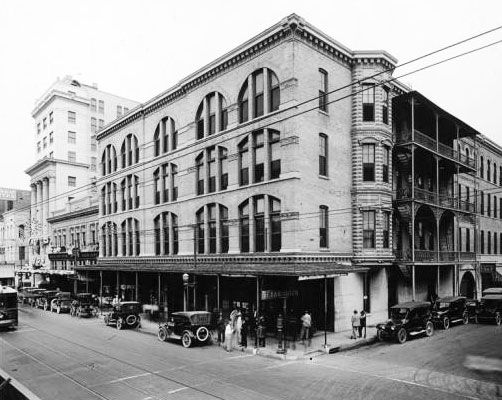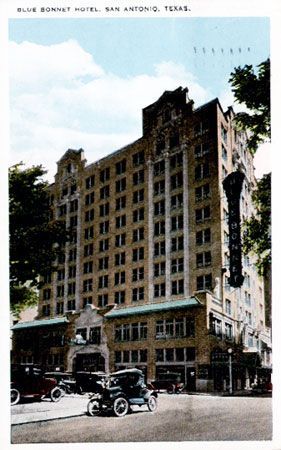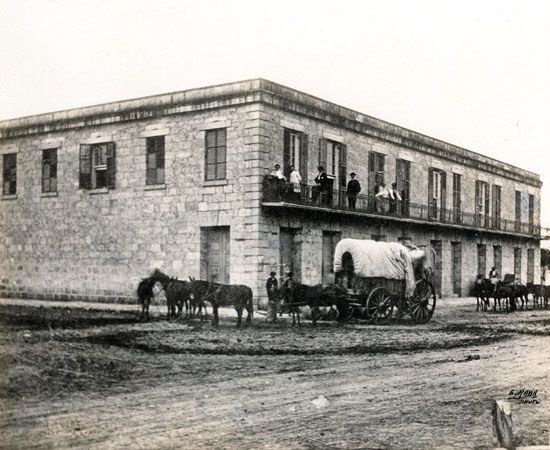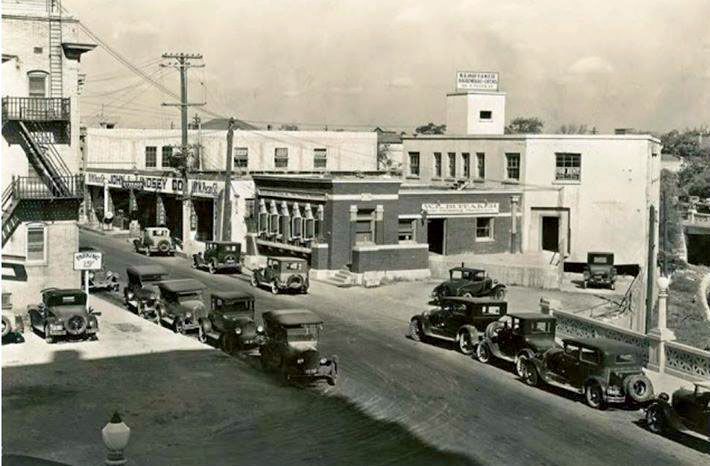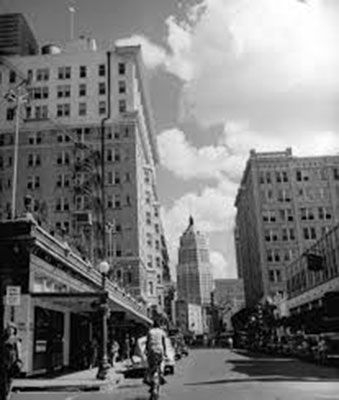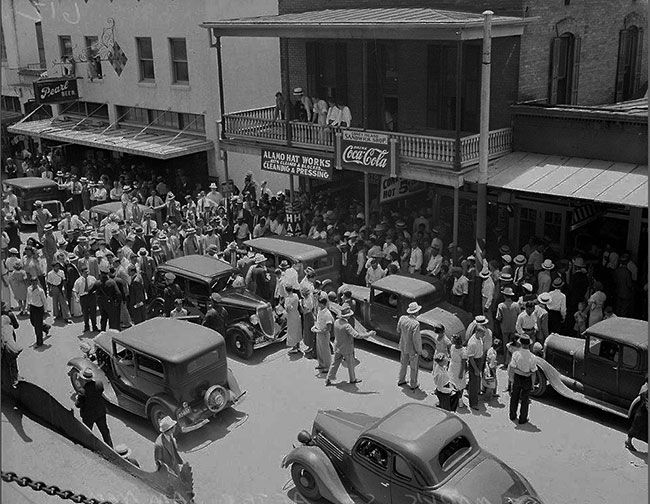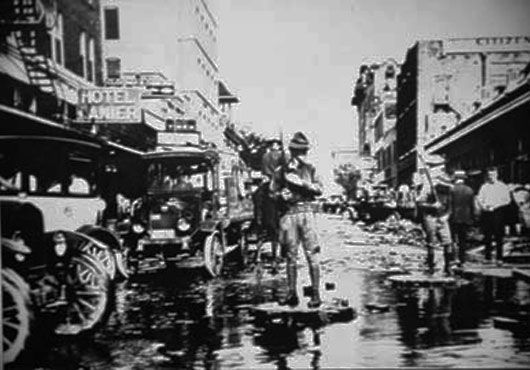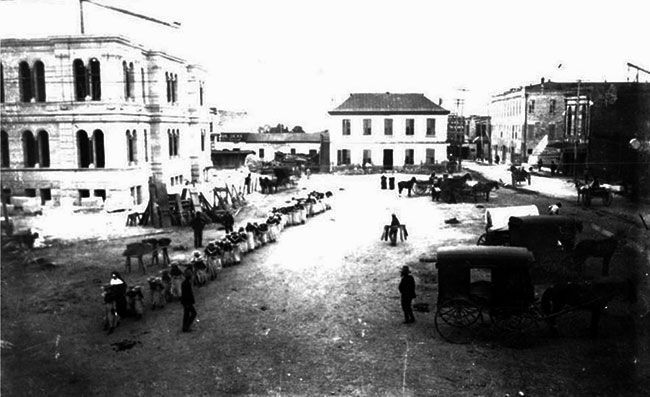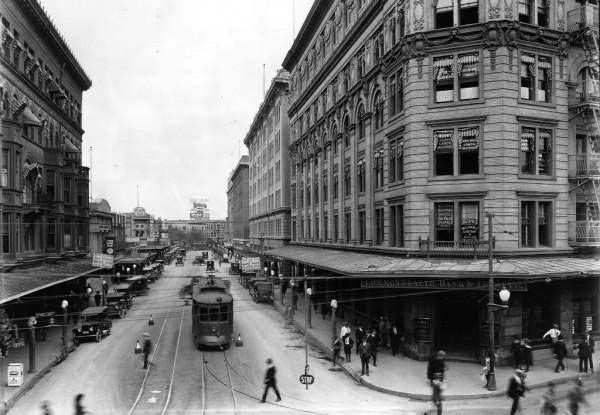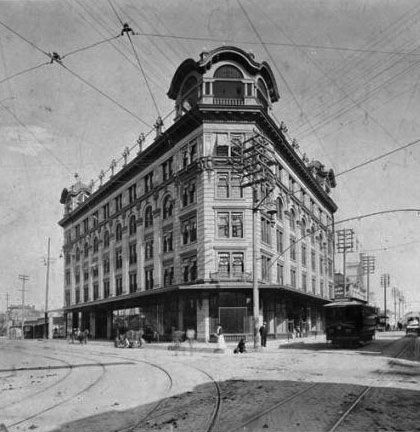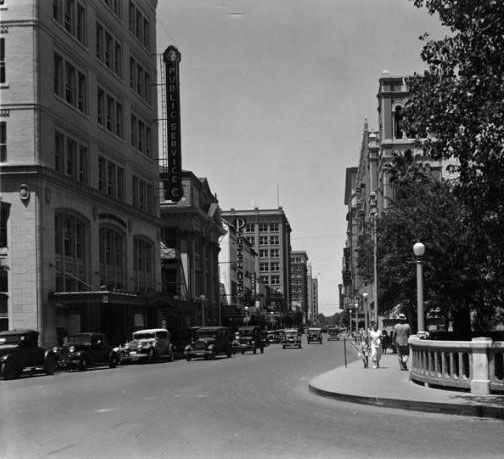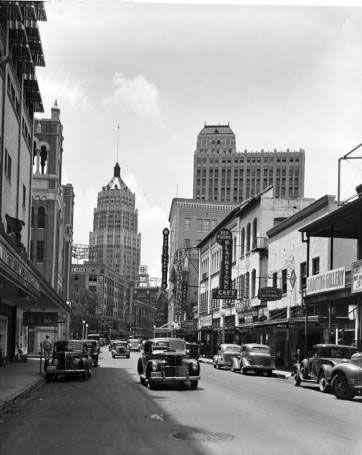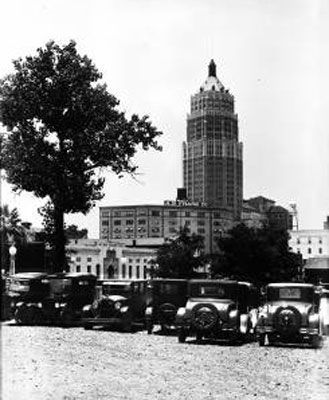The History of Roads and Bridges in San Antonio and South Central Texas up to 1944
This chapter focuses on the development of roads and bridges in San Antonio from the first bridge over the river up to 1944. As early as 1775, there were three categories of roads in Texas. There were urban streets, farm to market or rural roads, and main roads between towns, often referred to as highways, a word that goes back to the days when the most direct routes between towns were built near to rivers and longer routes with less shade and access to water for oxen and mules were built on higher ground. The highway was less convenient for local traffic but was less likely to be rendered impassable when it rained. By law, all roads between county seats in Texas were supposed to be first class, which was defined as forty feet wide and cleared of all obstructions. In the less inhabited parts of the state, the army was charged with maintaining postal roads between the series of forts that were built to maintain security in the area. In the more settled areas it was a county responsibility. Many farmers maintained the roads in lieu of taxes but their efforts were not always easy to discern.
From San Antonio's very earliest days in 1718, the thoroughfare between the Alamo and San Fernando cathedral, now called Commerce Street, was the most important thoroughfare in the city. The first wooden bridge suitable for more than pedestrians and light carriages was built over the river in 1841. Replaced with a stronger wooden structure in 1867, Commerce Street was thronged with activity of all kinds. Freight trains of up to thirty wagons, each pulled by teams of oxen and mules, arrived and departed every day. Mixed into this would be street vendors and blacksmiths. The number of mules, horses and oxen must have made the air almost unbearable. Disease carrying flies filled the air. A stroll across Main Square full of grazing animals provided an entirely different experience from today.
When Comal County was established in 1846, one of the first tasks for the Commissioner’s Court in New Braunfels was to define rights of way. The main arterial route, known as the San Antonio Road, was already "first class" by the standards of the day, as was the old stage route from Seguin, but few others had been created. By 1847 a route to Fredericksburg had been established, with landowners along the way compensated $10 for half an acre and $25 for a full acre. By 1890 routes to Blanco and Boerne had been added. Many landowners maintained the roads on their property in lieu of taxes, keeping them free of brush, weeds and low hanging tree limbs. Persons convicted of misdemeanors either unwilling or unable to pay their fines could also work off their debt by performing road work. Comal also required all able bodied men between twenty-one and forty-five to “donate” several days of labor each year towards road maintenance. When Atascosa (which can be translated as "boggy land that is difficult to cross" County was created in 1856, its population was extremely small. Teams of men were sent out from Pleasanton, the original county seat, to create roads and place markers along them, often simply piles of stones, to indicate the chosen path. But continual use in all conditions soon made the original route so badly churned up that successive wagons were obliged to keep finding less disturbed ground, making it almost impossible to say exactly where the original "road" was supposed to be.
The pace of development picks up with the arrival of the railroads
The pace of change accelerated, along with the city’s population, with the arrival of the first railroad in 1877 and another from the north in 1881. The transportation of iron and steel for bridges and taller buildings became much easier and less costly. An attractive iron span soon replaced the wooden bridge on Commerce Street. Introducing streetcars became possible. Cyclists were among the most ardent early campaigners for improved roads. Such efforts led to a number of improvements. Within San Antonio side walks were created and paving stones laid at the intersection of main streets to help pedestrians avoid the inevitable dust or mud from the unpaved streets. Some main roads, such as San Pedro Avenue, were macadamized, which involved laying down courses of stones of diminishing size towards the surface. Downtown streets needed to be watered down every day to keep down the dust. Special streetcars did this first things in the morning. Others were regularly dragged by mule drawn wagons with large spikes to reduce ruts made by heavily loaded wagons. While improvements to San Antonio streets were paid for by residents on a street by street basis and from a small tax on streetcar tickets, roads in and around smaller towns, with their smaller populations, remained primitive.
Mesquite blocks on San Antonio streets
A decidedly "South Texas" improvement to San Antonio's streets began in the mid 1880s with the laying of hexagonal mesquite blocks on Alamo Plaza. Mesquite was not only abundant, it was inexpensive. In fact it was essentially useless for much of anything else. Today many ranchers regard it as little more than a thirsty weed, but the gnarled wood is fairly durable and resistant to rot, a quality enhanced with the application of creosote. This did not fully discourage swelling following heavy rain, which frequently led to an uneven road surface. This was still considered a huge improvement over the quagmire on Alamo Plaza every time it rained, which gained the nickname "Sweeney’s Mud hole," and was impassable to all traffic. By 1889, Military Plaza and downtown sections of Commerce, Houston, Dolorosa, Market and St. Marys were similarly "paved."
By 1890 the population of San Antonio had reached almost 38,000. In that same year the first traffic control sign, undoubtedly saying either STOP or YIELD, was placed at the intersection of Commerce and Medina Streets, in front of the International & Great Northern railroad station. And St. Marys Street gained a wider iron bridge to replace the old footbridge, increasing the number of all traffic metal bridges over the river to three. In 1891 G.G. Braden became San Antonio’s first sidewalk contractor. Funds from a tax on streetcar tickets took care of one third of the cost. Residents on each side of street were levied their share in proportion to the size of their lots. For an extra fee, high concrete steps could be built in front of houses to assist getting into and out of horse carriages, and such amenities, indicating a certain level of wealth, were very popular. In New Braunfels and elsewhere, downtown streets had sidewalks but were otherwise unimproved. Most, like Comfort, hired a contractor to drag them daily to keep them passable. In Seguin, folks walked along the streetcars tracks on Austin Street to keep out of the mud when it rained.
First paved street in San Antonio - 1898
In 1898 a small section of Market Street on either side of St. Mary's Street in San Antonio became one of the first streets in Texas to be given a top layer of asphalt. A similar experiment was undertaken in downtown Houston. The material came from the only naturally occurring asphalt mine in Texas. Located near Uvalde, the operation ran until 1935. (Today asphalt is a manufactured blend of oil and crushed limestone.) The natural asphalt was applied quite crudely for several blocks by the Parker-Washington contracting company. Modern methods are quite more advanced than this first attempt to see how the material would fare in a busy intersection section of a major Texas city. In fact the original application stayed smooth and impervious until 1910 when it was replaced during a $220,000.00 street widening project.
By 1900 there were some twenty-four bridges over the still meandering San Antonio River. There were around eight thousand horseless carriages in America, but the pace of production was increasing rapidly. The first horseless carriage on record in San Antonio was an electric, delivered to the showrooms of the Staacke Brothers on Commerce Street. (It's most likely that Montgomery Ward brought in an electric vehicle demonstrator in 1897, but absolute confirmation has not be be established. The first gasoline powered automobile appeared in San Antonio in 1901. The San Antonio Automobile Club was formed in 1902 with thirteen charter members. That same year, Emil Seeliger of Lockhart acquired a car. The first car drove through Uvalde in 1904 and four were acquired by local residents the same year. Dr. C. Jones brought the first automobile to Comfort, a two cylinder Maxwell, in 1906.
Projects to widen San Antonio's old narrow and crooked streets
By 1900 there were some twenty-four bridges over the still meandering San Antonio River. There were around eight thousand horseless carriages in America, but the pace of production was increasing rapidly. The first horseless carriage on record in San Antonio was an electric, delivered to the showrooms of the Staacke Brothers on Commerce Street. (It's most likely that Montgomery Ward brought in an electric vehicle demonstrator in 1897, but absolute confirmation has not be be established. The first gasoline powered automobile appeared in San Antonio in 1901. The San Antonio Automobile Club was formed in 1902 with thirteen charter members. That same year, Emil Seeliger of Lockhart acquired a car. The first car drove through Uvalde in 1904 and four were acquired by local residents the same year. Dr. C. Jones brought the first automobile to Comfort, a two cylinder Maxwell, in 1906.
By 1900 there were some twenty-four bridges over the still meandering San Antonio River. There were around eight thousand horseless carriages in America, but the pace of production was increasing rapidly. The first horseless carriage on record in San Antonio was an electric, delivered to the showrooms of the Staacke Brothers on Commerce Street. (It's most likely that Montgomery Ward brought in an electric vehicle demonstrator in 1897, but absolute confirmation has not be be established. The first gasoline powered automobile appeared in San Antonio in 1901. The San Antonio Automobile Club was formed in 1902 with thirteen charter members. That same year, Emil Seeliger of Lockhart acquired a car. The first car drove through Uvalde in 1904 and four were acquired by local residents the same year. Dr. C. Jones brought the first automobile to Comfort, a two cylinder Maxwell, in 1906.
By 1900 there were some twenty-four bridges over the still meandering San Antonio River. There were around eight thousand horseless carriages in America, but the pace of production was increasing rapidly. The first horseless carriage on record in San Antonio was an electric, delivered to the showrooms of the Staacke Brothers on Commerce Street. (It's most likely that Montgomery Ward brought in an electric vehicle demonstrator in 1897, but absolute confirmation has not be be established. The first gasoline powered automobile appeared in San Antonio in 1901. The San Antonio Automobile Club was formed in 1902 with thirteen charter members. That same year, Emil Seeliger of Lockhart acquired a car. The first car drove through Uvalde in 1904 and four were acquired by local residents the same year. Dr. C. Jones brought the first automobile to Comfort, a two cylinder Maxwell, in 1906.
Projects to widen San Antonio's old narrow and crooked streets
By 1900 there were some twenty-four bridges over the still meandering San Antonio River. There were around eight thousand horseless carriages in America, but the pace of production was increasing rapidly. The first horseless carriage on record in San Antonio was an electric, delivered to the showrooms of the Staacke Brothers on Commerce Street. (It's most likely that Montgomery Ward brought in an electric vehicle demonstrator in 1897, but absolute confirmation has not be be established. The first gasoline powered automobile appeared in San Antonio in 1901. The San Antonio Automobile Club was formed in 1902 with thirteen charter members. That same year, Emil Seeliger of Lockhart acquired a car. The first car drove through Uvalde in 1904 and four were acquired by local residents the same year. Dr. C. Jones brought the first automobile to Comfort, a two cylinder Maxwell, in 1906.
During the depression the federal government’s share of road construction costs rose from around 10% to almost half. In both 1934 and 1936 Congress emphasized spending on farm to market roads at the expense of limited access highways. As a result almost none existed outside of California and the northeast of the country in 1940. Of the 190,000 miles of roads in Texas, just 26,805 could be classified as interstate in nature and none were limited access. Most had only two lanes, “B” roads by today’s standards. Of the nation’s three million miles of roads only half had been graded, graveled and drained and therefore classifiable as all weather roads. With war once again on the horizon, 75,000 miles of the nation’s roads were designated strategic highways. Of these, 14,000 miles were found to be too weak and 4,000 miles too narrow. Over 24,000 bridges need to be upgraded or replaced. Work on other roads was suspended to concentrate on urgently needed military projects. Fortunately the railroads were better prepared this time. They carried the bulk of military supplies during the war, but suffered enormous wear and tear due to overuse and insufficient maintenance due to manpower and material shortages.
World War Two would bring even greater changes to San Antonio and its road systems. These will be discussed in a different chapter on this web site.
San Antonio Road Travel Timeline
━━━━━━━━━━━━━━━━━
1841
First heavy duty bridge over the river in San Antonio
━━━━━━━━━━━━━━━━━
1847
Texas United Stated Mail Line was running two stagecoaches a week between Houston and San Antonio.
━━━━━━━━━━━━━━━━━
1848
Bi-monthly stage coach service running between San Antonio and Corpus Christi, later extended to Brownsville.
Stage coach service from SA to Austin by Tarbox & Brown
━━━━━━━━━━━━━━━━━
1849
Stage coach service from SA to Port Lavaca
━━━━━━━━━━━━━━━━━
1851
Henry Skillman begins running a stage coach service between San Antonio and El Paso.
Stagecoach service from SA to Indianola.
━━━━━━━━━━━━━━━━━
1854
First volunteer fire company is formed.
━━━━━━━━━━━━━━━━━
1857
George S Giddings takes over the El Paso contract and extends service to San Diego, CA. It initially took seven weeks to travel the 1,476 mile journey but this was cut to fours weeks. Called the Southern Overland Mail, the service lasted until the beginning of the civil war, when the federal contract is revoked.
━━━━━━━━━━━━━━━━━
1867
Heavy duty bridge over the river in San Antonio at Commerce Street replaced with a second wooden structure
━━━━━━━━━━━━━━━━━
1871
First heavy duty iron bridge installed in San Antonio creating Houston Street in the process
1880
Three horse carriage manufacturers operate in San Antonio. Work to replace the wooden bridge over the river at Commerce Street with an iron bridge is begun.
━━━━━━━━━━━━━━━━━
1889
Some downtown streets are paved with mesquite blocks.
━━━━━━━━━━━━━━━━━
1890
First traffic signal installed, on Commerce Street, near I&GN station.
━━━━━━━━━━━━━━━━━
1898
Several block of Market Street on either side of the intersection with St. Marys are crudely asphalted. Along with a similar project in Houston, these are the first paved roads in Texas.
━━━━━━━━━━━━━━━━━
1899
1st horseless carriages, battery powered Studebakers, arrive at the Staacke Bros. showroom on Commerce Street.
━━━━━━━━━━━━━━━━━
1901
1st gasoline powered automobile, a Haynes Apperson, acquired by a Commerce Street banker
━━━━━━━━━━━━━━━━━
1902
1st city automobile sale, a single cylinder Curved Dash Oldsmobile made at a bicycle store on Houston Street
━━━━━━━━━━━━━━━━━
1903
1st Automobile club formed
━━━━━━━━━━━━━━━━━
1904
City ordinance requires automobiles be numbered. A city wide speed limit oif 6 MPH was set, leading in March to the first speeding ticket and court fine.
━━━━━━━━━━━━━━━━━
1905
As of August 21, 1905, the city engineer of San Antonio reported that there were 71 automobiles in San Antonio, representing a value of about $37,200.
First motorized vehicles take part in Battle of Flowers parade
━━━━━━━━━━━━━━━━━
1909
First Ford dealership opened.
━━━━━━━━━━━━━━━━━
1910
SAPD acquires its first automobile, an air cooled Franklin, for patrol work, plus motorcycles
San Antonio issues its first set of road rules. Rule #1: Drive on the right side of the street.
First motorized fire trucks acquired.
━━━━━━━━━━━━━━━━━
1912
Widening of Commerce Street begins.
━━━━━━━━━━━━━━━━━
1913
Broadway is created out of Avenue C and River Avenue
━━━━━━━━━━━━━━━━━
1915
Old Spanish Trail connecting St. Augustine, FL, to San Diego, CA, via San Antonio, is begun
━━━━━━━━━━━━━━━━━
1917
Texas Department of Transportation, TxDOT, is created.. Texas highways given state issued numbers. Route between Houston and San Antonio becomes State Highway 3
━━━━━━━━━━━━━━━━━
1917
The first bus in San Antonio is built in the shops of the San Antonio Public Service Company.
━━━━━━━━━━━━━━━━━
1919
San Antonio gains first TxDot offices as headquarters of one of its six divisions. TxDot was created in 1917.
Headquarters of the "Old Spanish Trail" moved to San Antonio.
Lone Star Motor Company sets up an automobile and truck plant at 515 Roosevelt.
━━━━━━━━━━━━━━━━━
1922
Lone Star Motor Company goes out of business.
━━━━━━━━━━━━━━━━━
1923
First factory built bus is acquired.
First electric traffic light is installed.
SAPD creates an automobile theft squad.
The last police horse is retired.
━━━━━━━━━━━━━━━━━
1925
National highway numbering system introduced. Route between Houston and San Antonio becomes Highway 90
━━━━━━━━━━━━━━━━━
1927
Last use of horse drawn fire equipment.
━━━━━━━━━━━━━━━━━
1928
San Antonio motorist guide still advises not to leave the city if it's raining, has recently rained or rain is in the forecast.
━━━━━━━━━━━━━━━━━
1929
"Old Spanish Trail" completed, 14 years after it began, running from St. Augustine, FL, to San Diego, CA. Within Texas the route becomes HWY 90 and runs through San Antonio.
━━━━━━━━━━━━━━━━━
1932
Texas Board of County and District Road Indebtedness is created to pay back local authorities for roads created by bonds and other means which were now part of the state highway system.
━━━━━━━━━━━━━━━━━
1933
San Antonio becomes the first major US city to abandon its street rail car service.
━━━━━━━━━━━━━━━━━
1935
SAPD patrol cars are fitted with 2 way radios.
━━━━━━━━━━━━━━━━━
1936
First traffic meters are installed
━━━━━━━━━━━━━━━━━
1942
The privately owned San Antonio Transit Company takes over the previously city owned bus service.
━━━━━━━━━━━━━━━━━
1943
Planning begins in San Antonio for the post war free way system as the city expands rapidly.
━━━━━━━━━━━━━━━━━
1949
San Antonio's first expressway, HWY 281, is completed.
First 3/4 mile section of US 87, now IH10, is completed between Woodlawn Avenue to Martin Street.
━━━━━━━━━━━━━━━━━
1956
First section of IH35, from Alamo Street to Broadway is completed.
━━━━━━━━━━━━━━━━━
1957
First section of Loop 410 is completed.
IH35 now reaches south to Division Avenue.
━━━━━━━━━━━━━━━━━
1959
The city owned SA Transit System takes over from the SA Transit Company.
━━━━━━━━━━━━━━━━━
1960
City first mall, Wonderland, now Crossroads, is opened.
━━━━━━━━━━━━━━━━━
1964
IH10 now reaches De Zavala to the west and exceeds city limits to the east.
First section of Loop 1604 is opened, from Bandera to IH 10.
━━━━━━━━━━━━━━━━━
1967
Loop 410, nearly 52 miles round, is completed.
A section of Loop 1604, west from HWY 90 is opened.
Breathalyzers are introduced by SAPD.
━━━━━━━━━━━━━━━━━
1973
Use of radar to catch speeders introduced.
━━━━━━━━━━━━━━━━━
1978
VIA Metropolitan Service takes over the city bus system, making it a county wide service.
McAllister free way, the improved HWY 281, is finally opened after a decade long political struggle to prevent its creation.
━━━━━━━━━━━━━━━━━
1979
Loop 1604 is completed.
━━━━━━━━━━━━━━━━━
1985
Mobile digital terminals, MDT's, installed in SAPD patrol cars.
━━━━━━━━━━━━━━━━━
1990
Downtown bicycle patrols introduced.
━━━━━━━━━━━━━━━━━
2006
November 17, Friday - First production vehicles come off the production line at new Toyota factory in San Antonio. Peak production, when achieved, should be one new Tundra pick up every 73 seconds, of 750 a day, 200,000 year.
Frank Crothers at the San Antonio bicycle race track.
